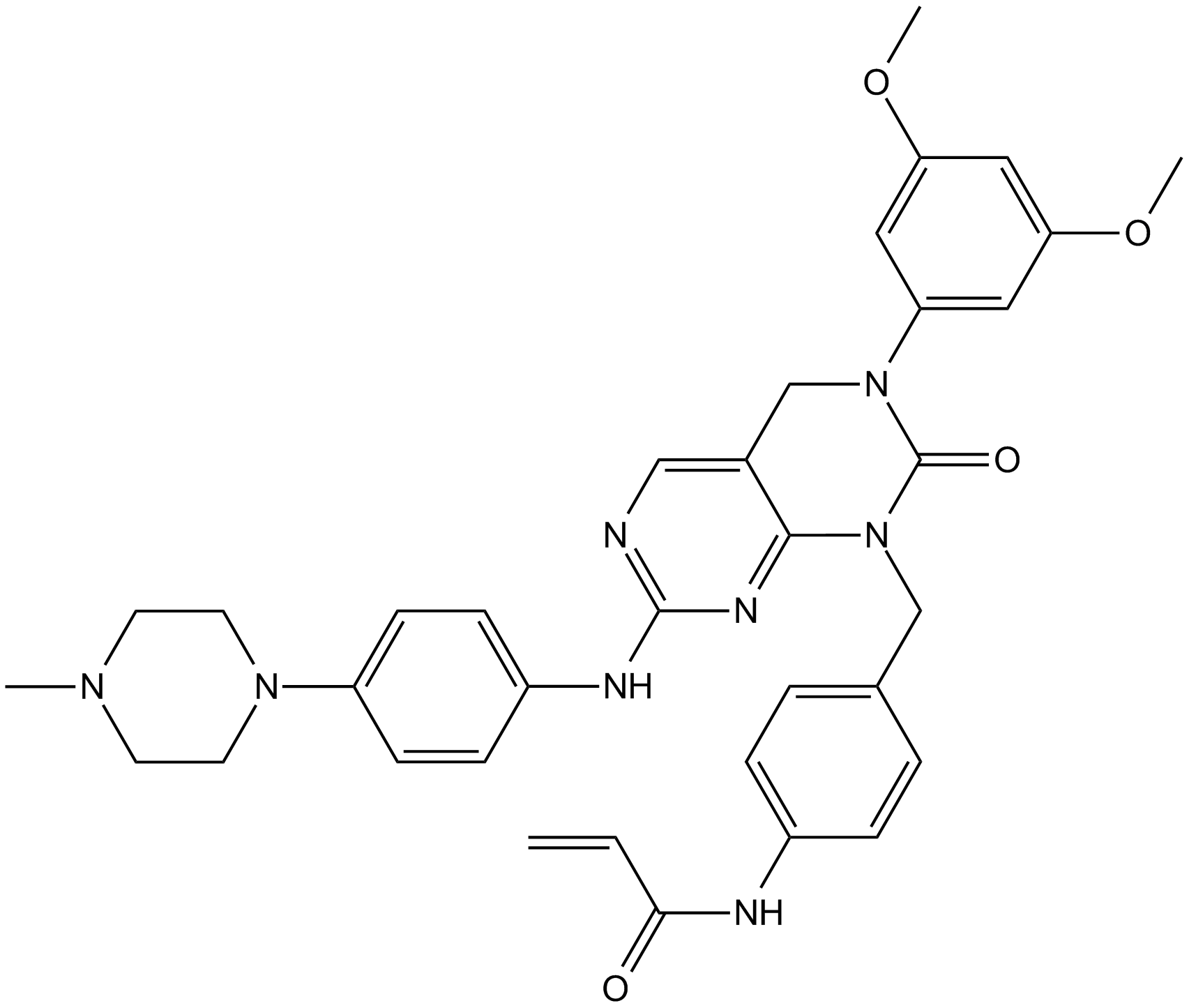EGFR
EGFR (epidermal growth factor receptor) is the cell-surface receptor of its specific ligands, including epidermal growth factor and TGFα (transforming growth factor α) and is a receptor tyrosine kinase.
Products for EGFR
- Cat.No. Product Name Information
-
GC38006
β-Hydroxyisovalerylshikonin
Beta-hydroxyisovalerylshikonin is a natural product isolated from Lithospermium radix, acts as a potent inhibitor of protein tyrosine kinases (PTK), with IC50s of 0.7μM and 1μM for EGFR and v-Src receptor, respectively. Beta-hydroxyisovalerylshikonin is effective against a wide variety of tumor cell lines, and most efficiently induces cell-death in NCI-H522 and DMS114 cells.
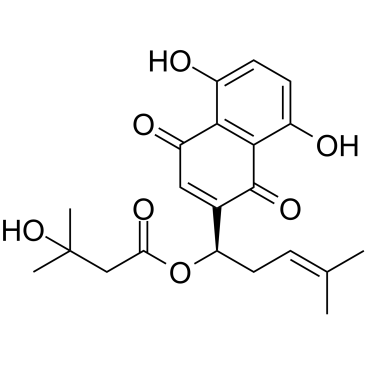
-
GC61807
(E/Z)-AG490
(E/Z)-AG490 ((E/Z)-Tyrphostin AG490) is a racemic compound of (E)-AG490 and (Z)-AG490 isomers. (E)-AG490 is a tyrosine kinase inhibitor that inhibits EGFR, Stat-3 and JAK2/3.

-
GC63797
(S)-Sunvozertinib
(S)-Sunvozertinib ((S)-DZD9008), the S-enantiomer of Sunvozertinib, shows inhibitory activity against EGFR exon 20 NPH and ASV insertions, EGFR L858R/T790M mutation and Her2 exon20 YVMA insertion (IC50=51.2 nM, 51.9 nM, 1 nM, and 21.2 nM, respectively). (S)-Sunvozertinib also inhibits BTK.
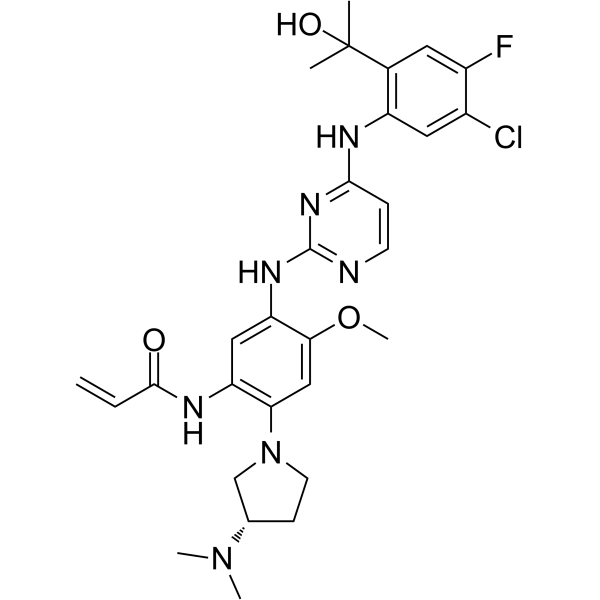
-
GC12818
4-methyl Erlotinib
EGFR inhibitor
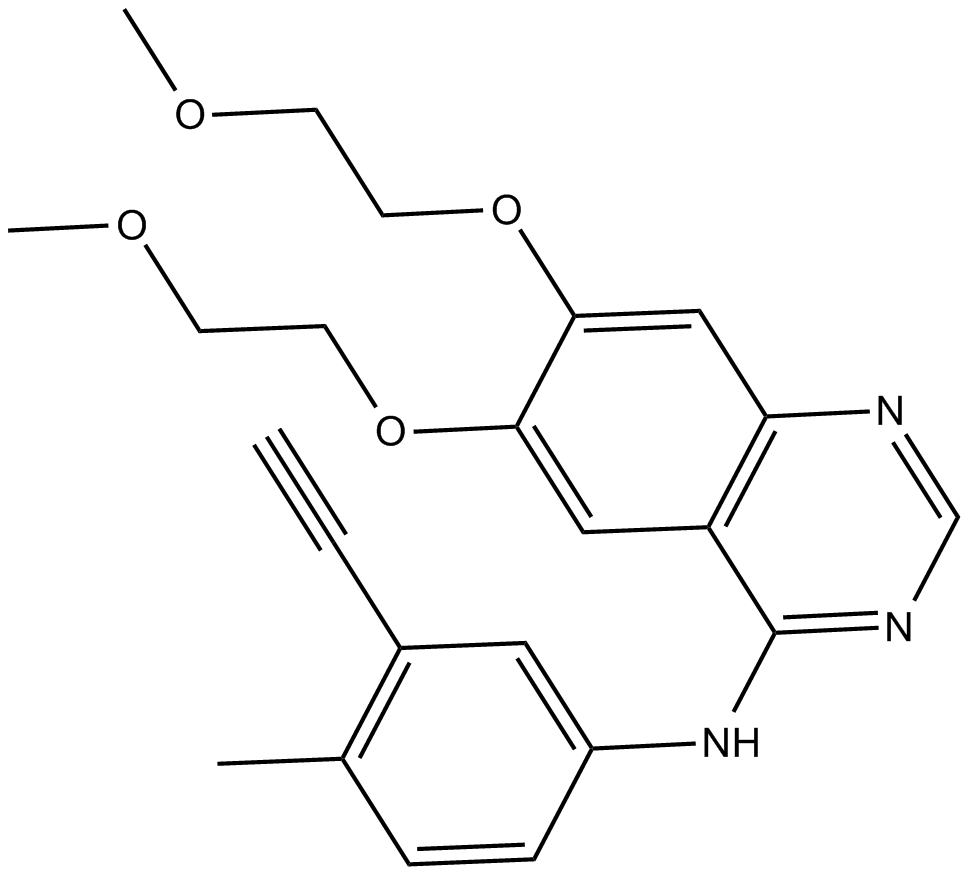
-
GC13257
AC480 (BMS-599626)
AC480 (BMS-599626) (AC480) is a selective and orally bioavailable HER1 and HER2 inhibitor, with IC50s of 20 and 30 nM, respectively. AC480 (BMS-599626) displays ~8-fold less potent to HER4 (IC50=190 nM), >100-fold to VEGFR2, c-Kit, Lck, MEK. AC480 (BMS-599626) inhibits tumor cell proliferation, and has potential to increase tumor response to radiotherapy.
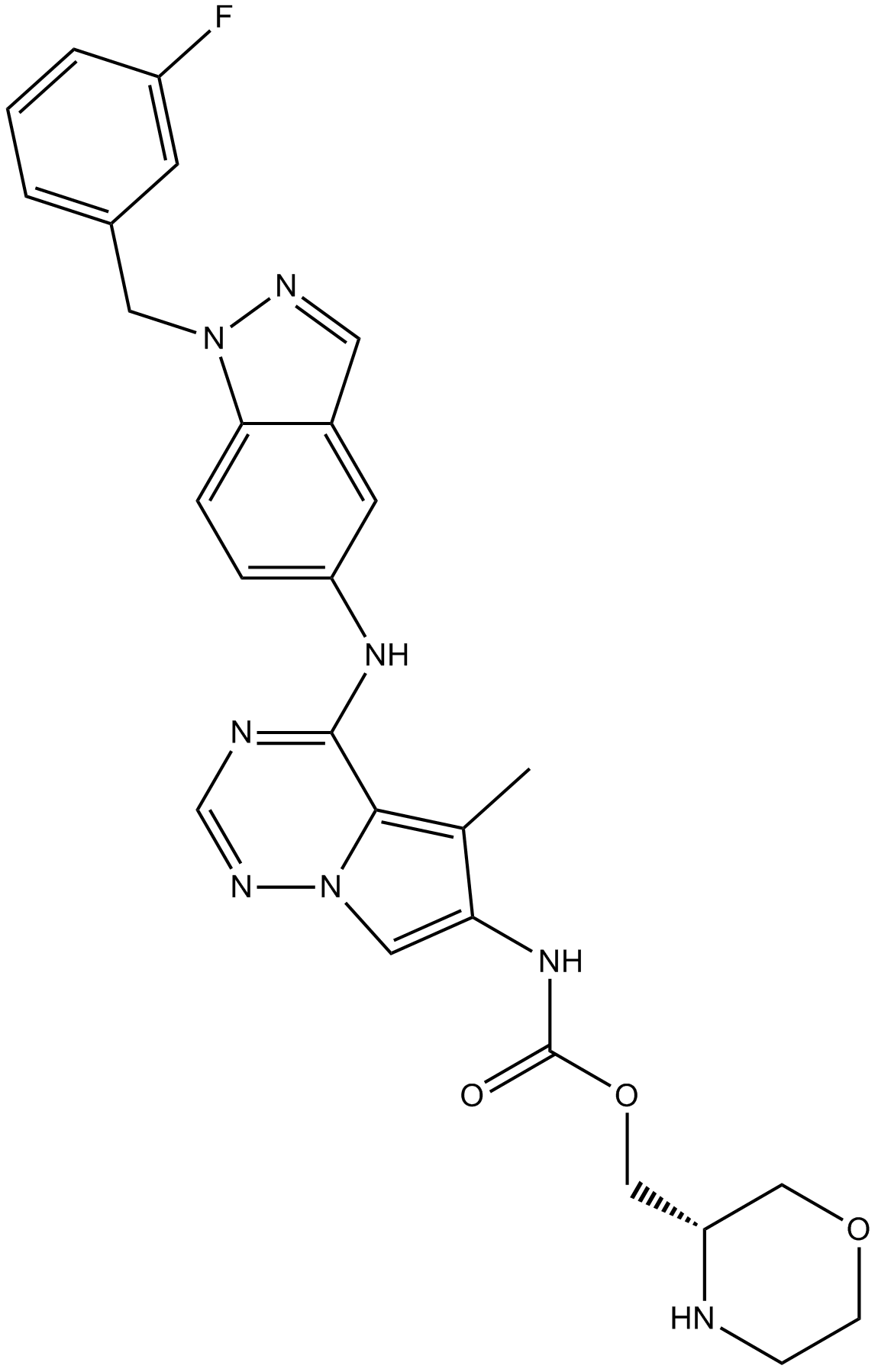
-
GC11892
AEE788 (NVP-AEE788)
AEE788 (NVP-AEE788) is an inhibitor of the EGFR and ErbB2 with IC50 values of 2 and 6 nM, respectively.
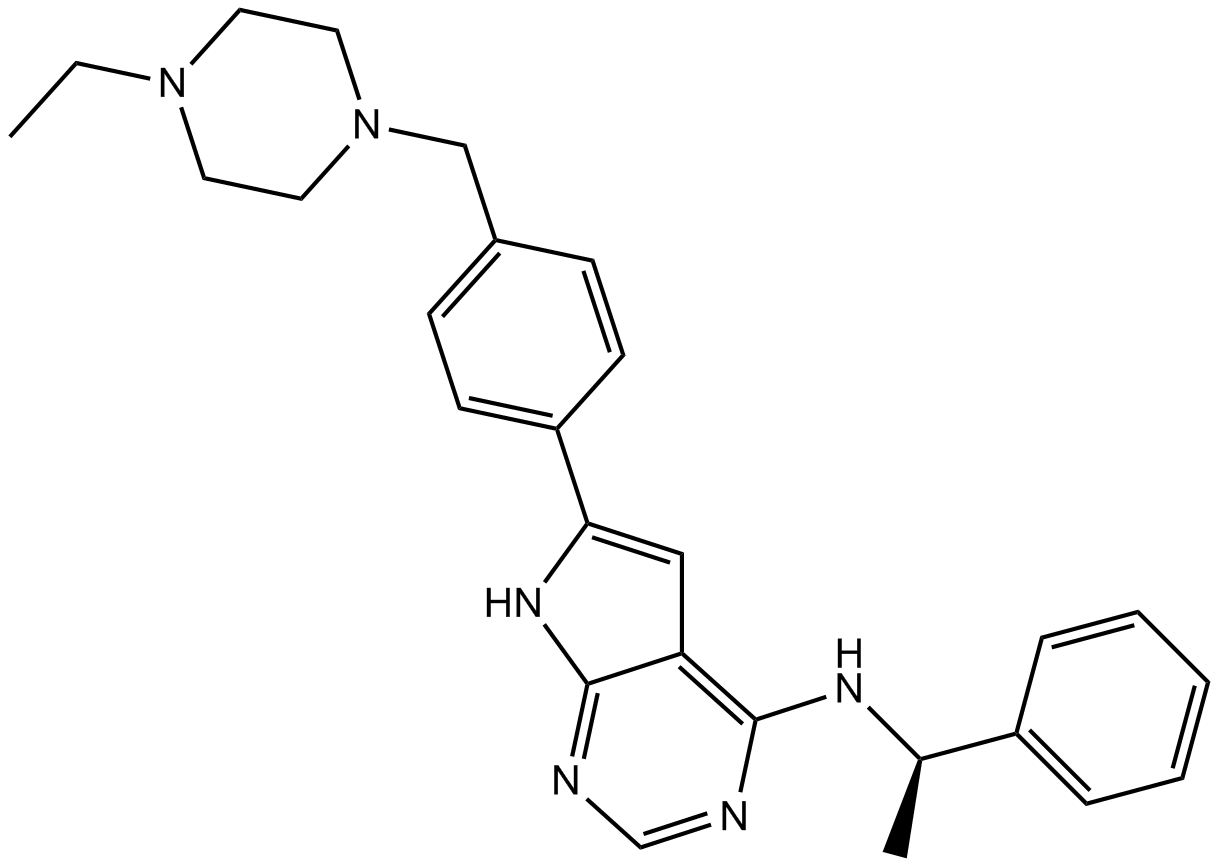
-
GC10707
Afatinib dimaleate
An inhibitor of EGFR and ErbB2
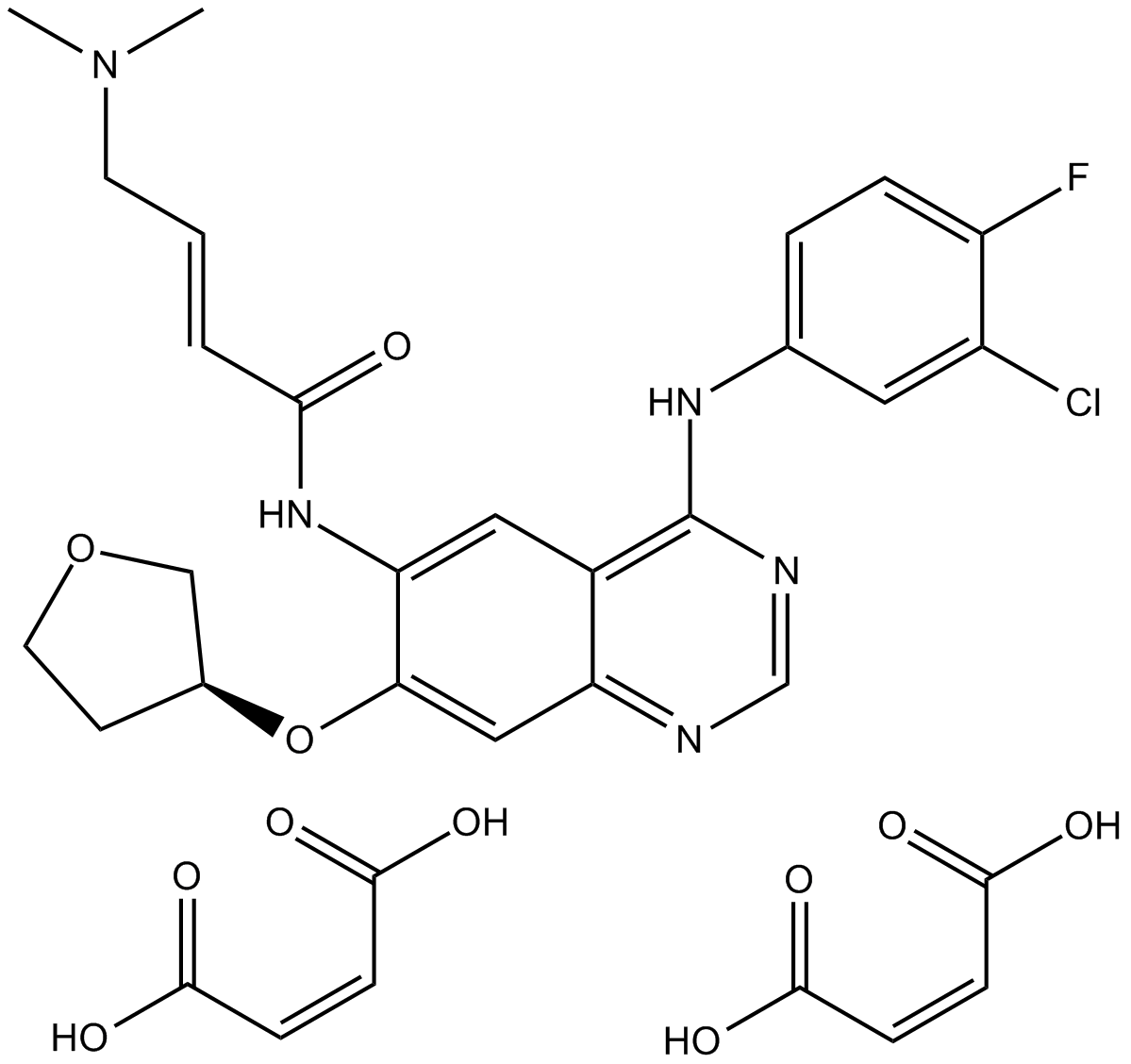
-
GC60567
Afatinib impurity 11
Afatinib impurity 11 is an impurity of Afatinib. Afatinib is an irreversible EGFR family inhibitor with IC50s of 0.5 nM, 0.4 nM, 10 nM and 14 nM for EGFRwt, EGFRL858R, EGFRL858R/T790M and HER2, respectively.
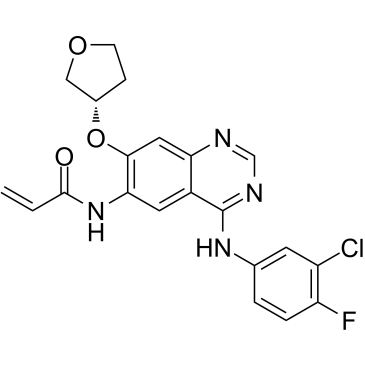
-
GC13296
Afatinib(BIBW2992)
A selective dual inhibitor of EGFR/HER2
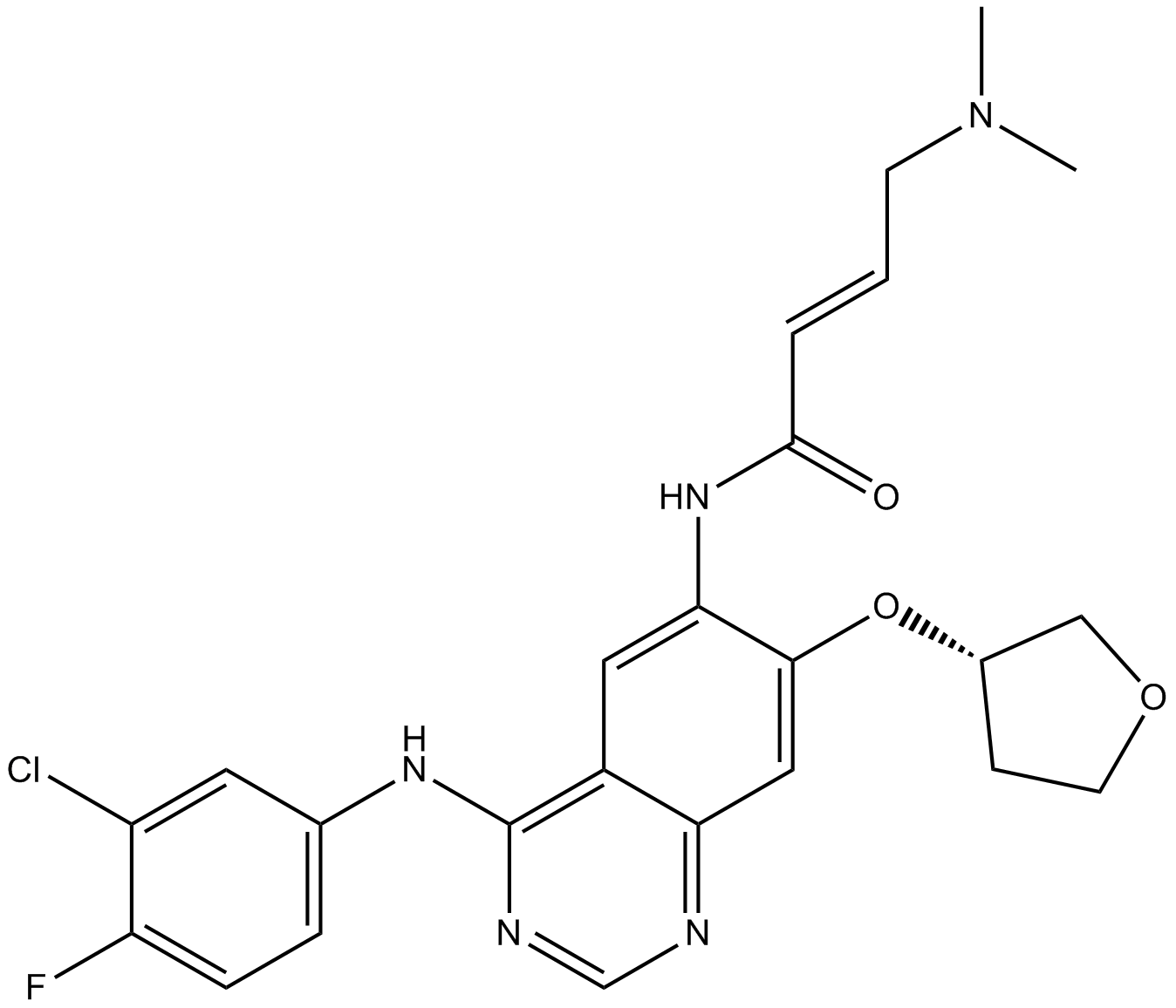
-
GC50013
AG 1478 hydrochloride
Highly potent EGFR-kinase inhibitor
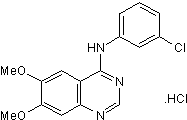
-
GC17489
AG 494
Potent EGFR-kinase inhibitor
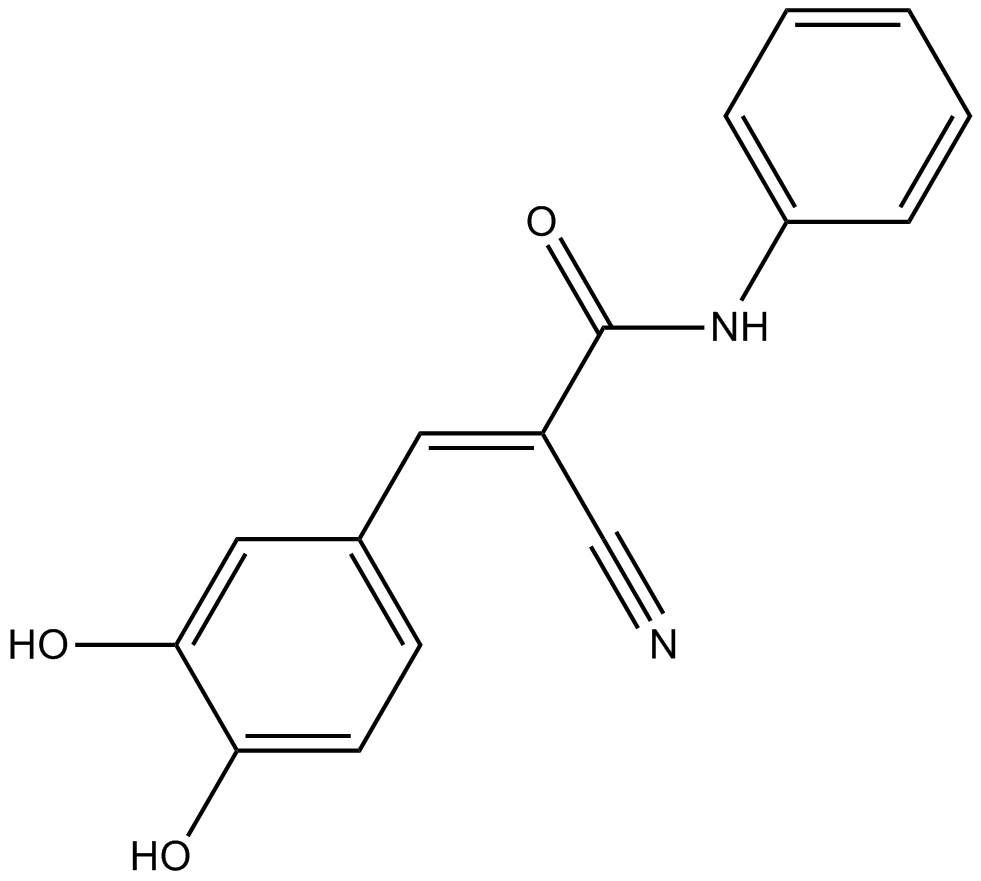
-
GC11744
AG 555
Potent EGFR-kinase inhibitor
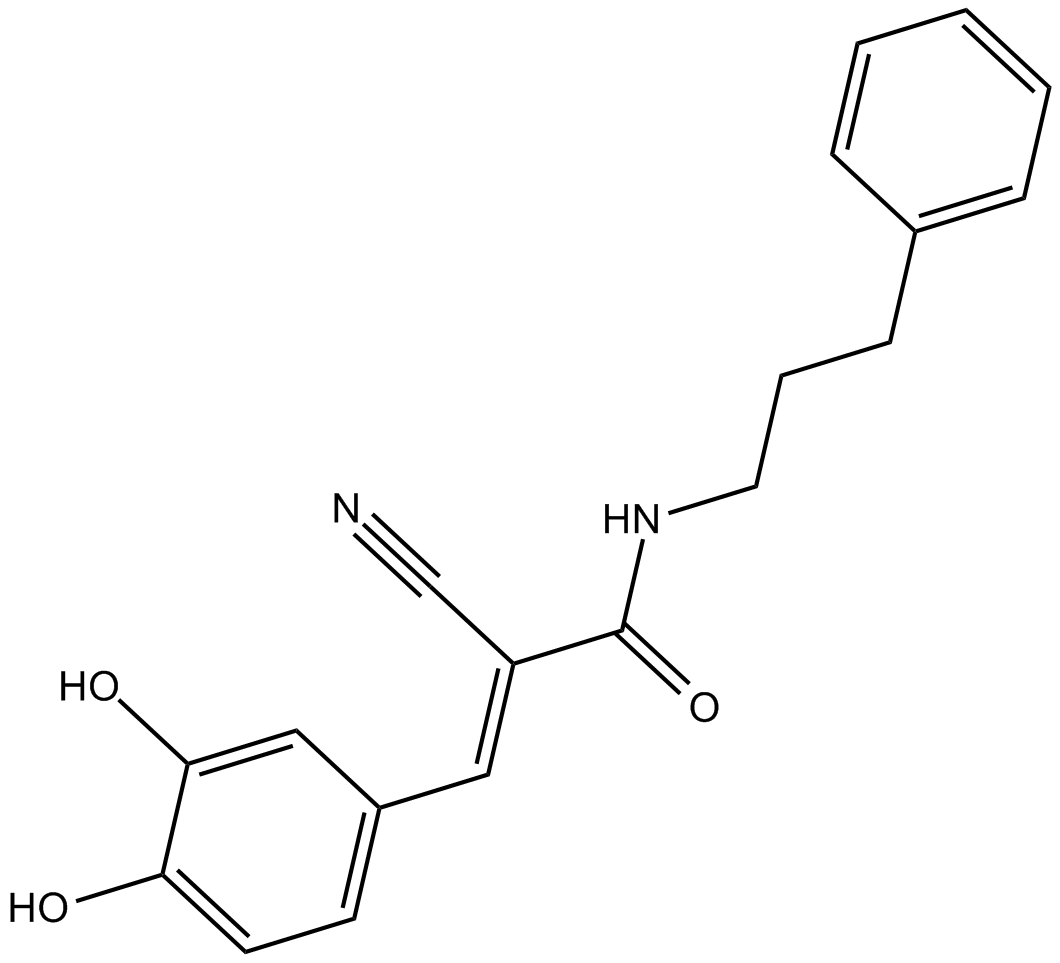
-
GC12233
AG 556
AG 556 is a highly selective EGFR inhibitor and also blocks LPS-induced TNF-α production.
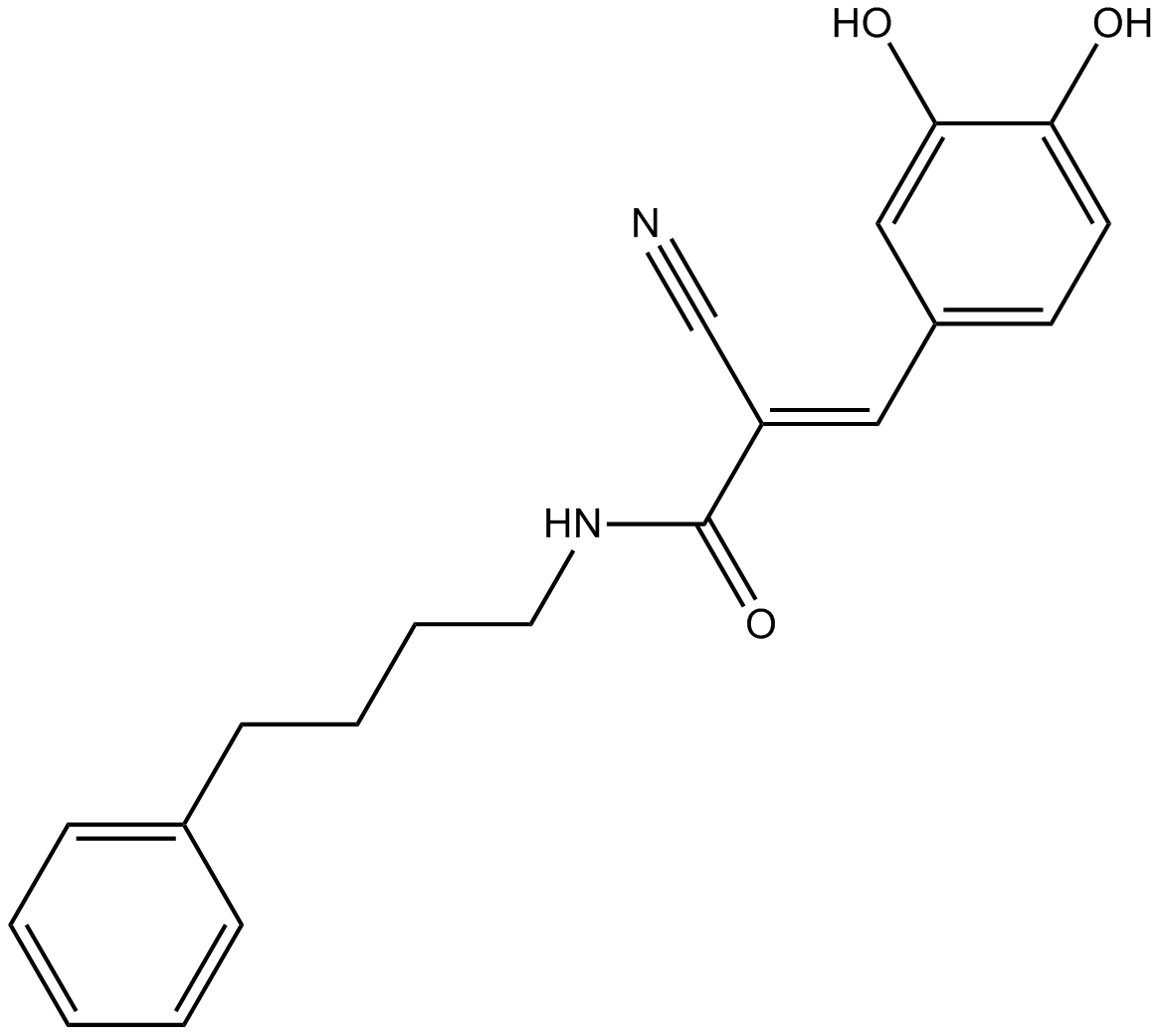
-
GC13168
AG 825
Selective ErbB2 inhibitor
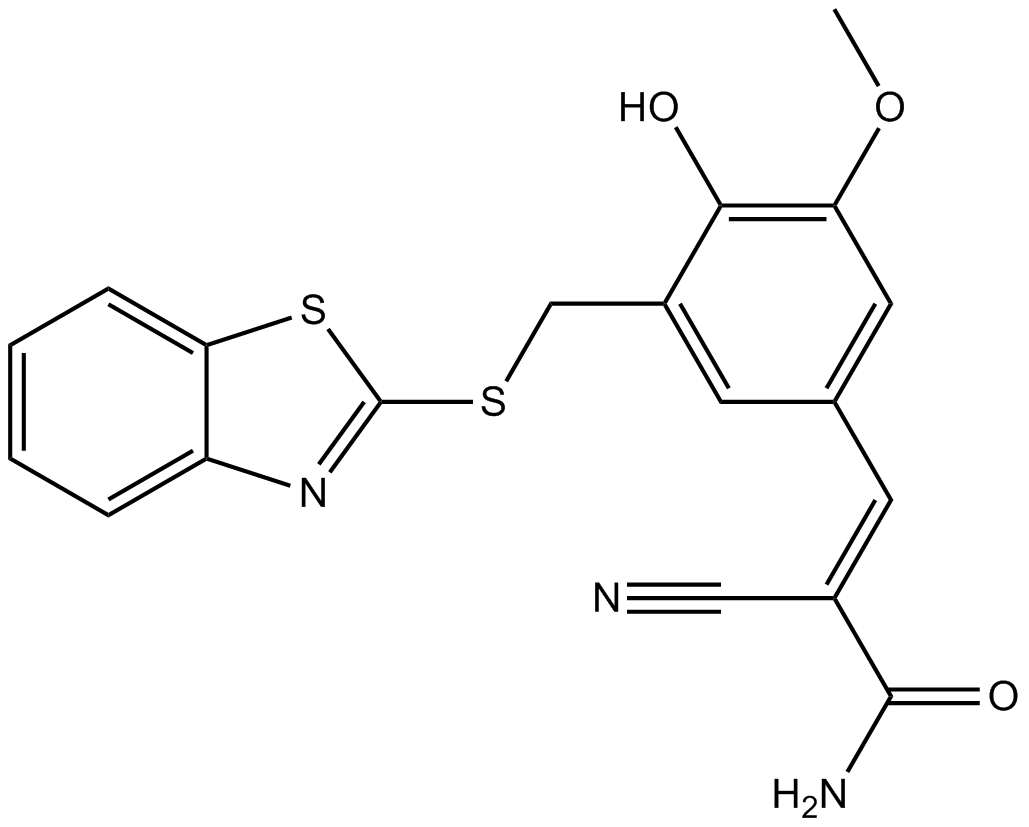
-
GC14494
AG 99
AG 99 ((E)-Tyrphostin 46) is a potent EGFR inhibitor.
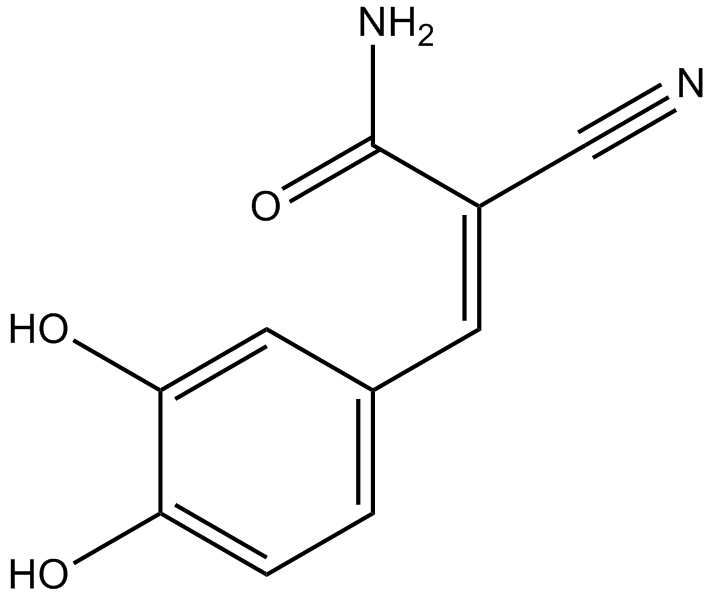
-
GC17226
AG-1478
EGFR inhibitor,potent and selective
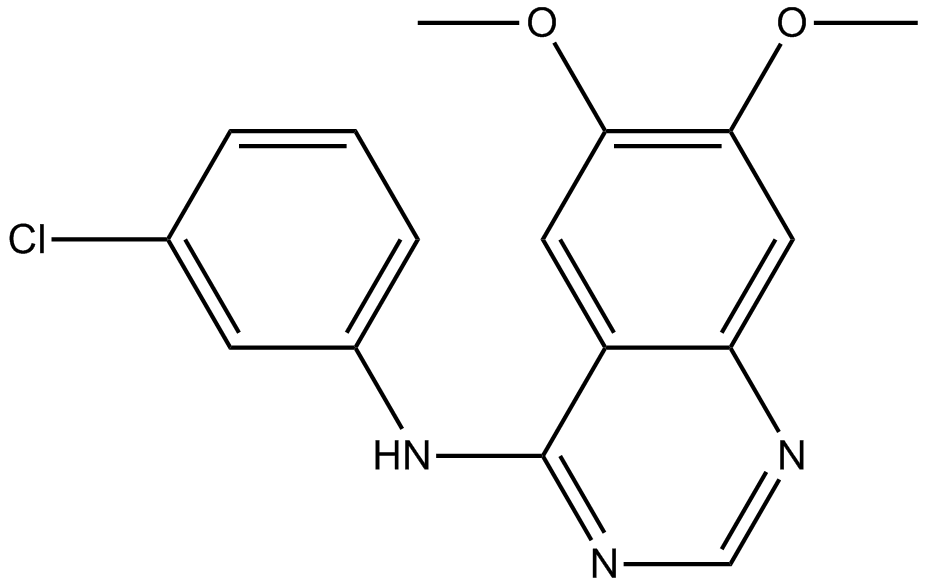
-
GC12864
AG-1557
inhibitor of epidermal growth factor receptor (EGFR) tyrosine kinase
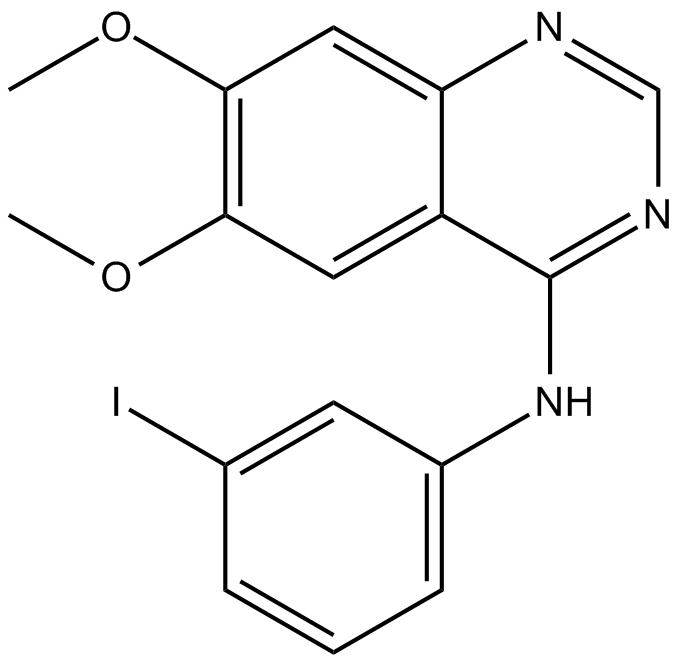
-
GC17647
AG-18
AG-18 (Tyrphostin A23) is an EGFR inhibitor with an IC50 and Kiof 35 and 11 μM, respectively.
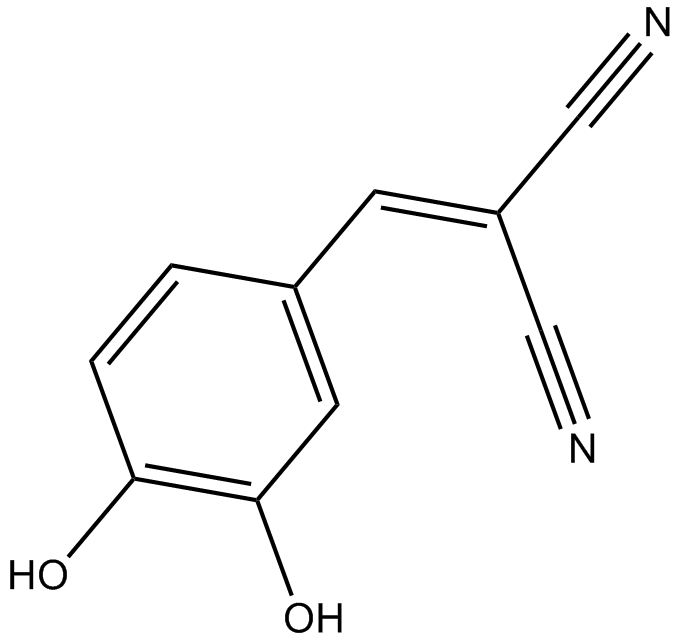
-
GC14890
AG-183
AG-183 is the Z configuration of Lanoconazole A51.
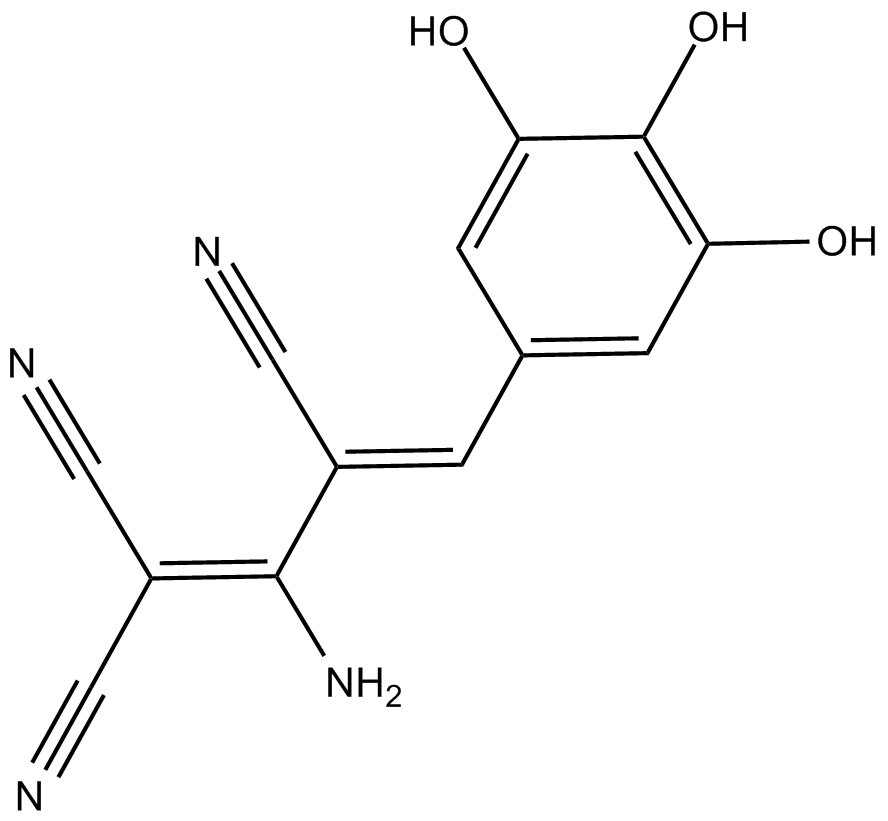
-
GC11024
AG-213
inhibitor of epidermal growth factor (EGF) receptor kinase
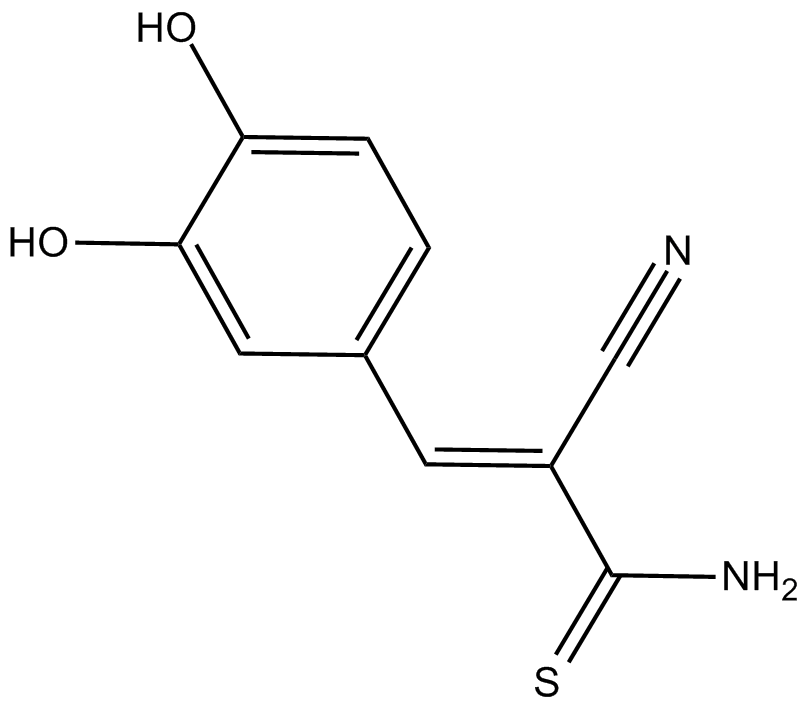
-
GC13854
AG-490 (Tyrphostin B42)
AG-490 (Tyrphostin B42) (Tyrphostin AG-490 (Tyrphostin B42)) is a tyrosine kinase inhibitor that inhibits EGFR, Stat-3 and JAK2/3.
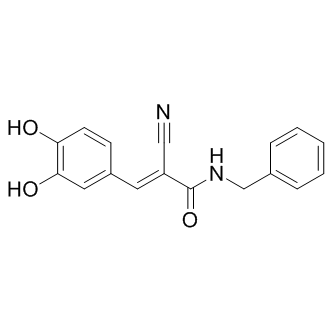
-
GC11845
AG-82
AG-82 (AG82) is a specific inhibitor of the EGFR tyrosine kinase.
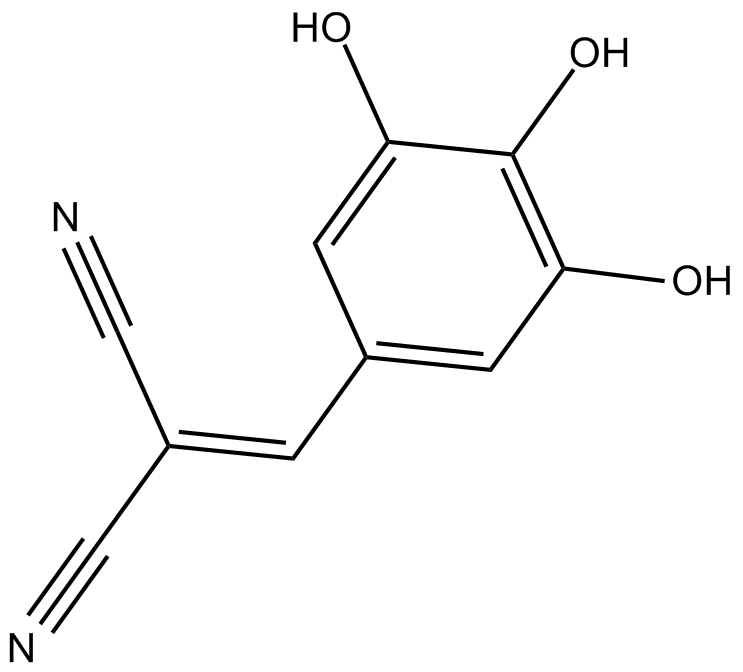
-
GC64398
Almonertinib mesylate
Almonertinib (HS-10296) mesylate is an orally available, irreversible, third-generation EGFR tyrosine kinase inhibitor with high selectivity for EGFR-sensitizing and T790M resistance mutations. Almonertinib mesylate shows great inhibitory activity against T790M, T790M/L858R and T790M/Del19 (IC50: 0.37, 0.29 and 0.21 nM, respectively), and is less effective against wild type (3.39 nM). Almonertinib mesylate is used for the research of the non-small cell lung cancer.
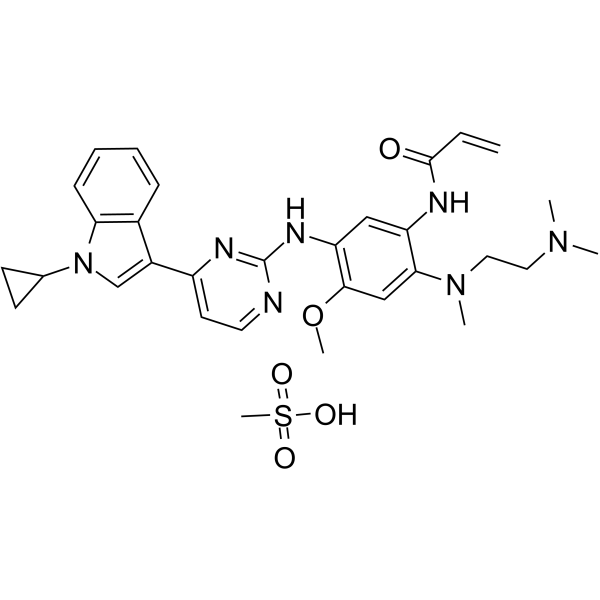
-
GC67749
Amivantamab
Amivantamab (JNJ-61186372) is a human EGFR-MET bispecific antibody with immune anticancer activity

-
GC17283
AP26113
AP26113 (Brigatinib analog) is a potent and selective active inhibitor of anaplastic lymphoma kinase(ALK), Patent US20140066406 A1.
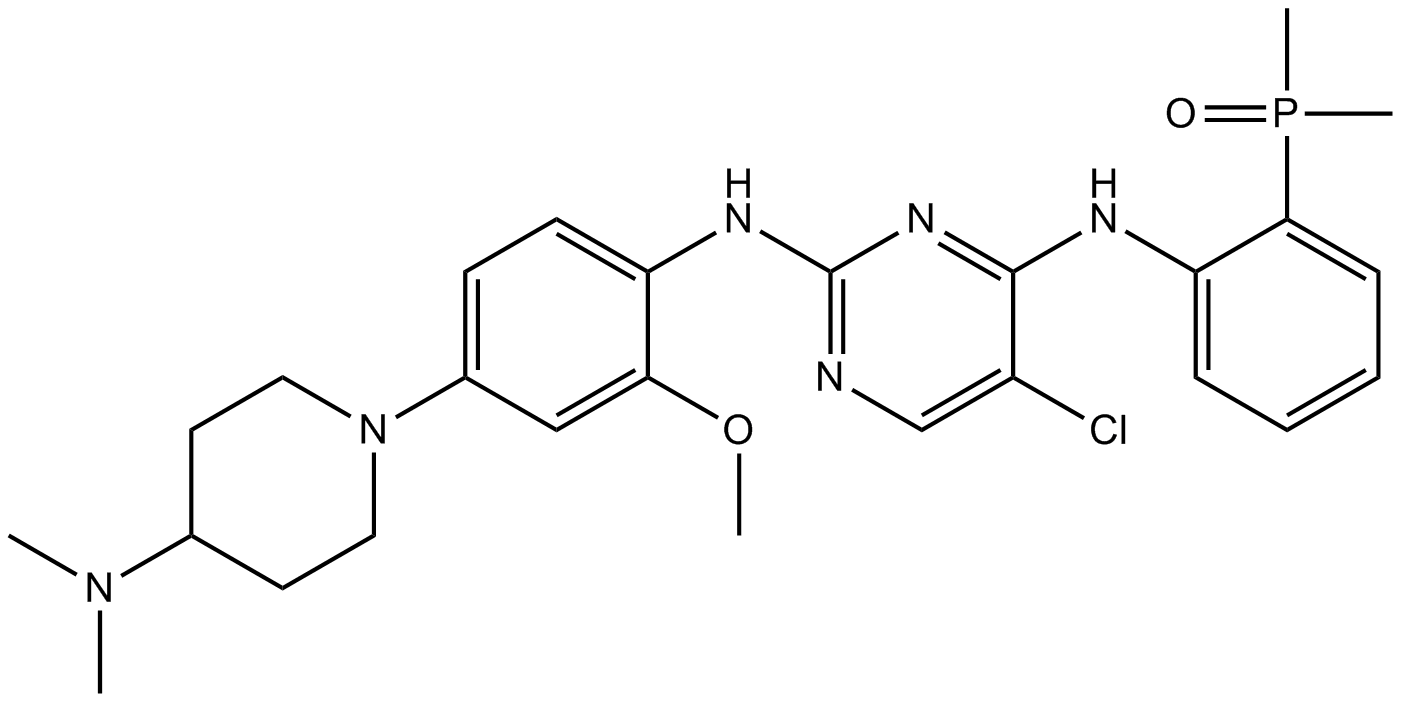
-
GC12478
ARRY-380
ARRY-380, an inhibitor of EGFR (ErbB1), is extracted from patent WO2015153959A2, compound 249. ARRY-380 is a potent, selective, ATP-competitive, orally active inhibitor of HER2.
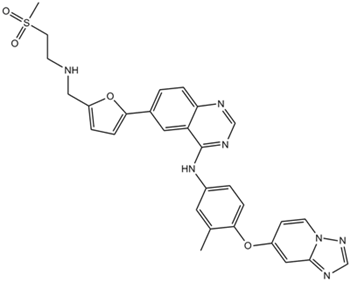
-
GC62402
ASK120067
ASK120067 (ASK120067) is a potent and orally active inhibitor of EGFRT790M (IC50:0.3 nM) with selectivity over EGFRWT (IC50:6.0 nM). ASK120067 is a third-generation EGFR-TKI for the research ofnon-small cell lung cancer (NSCLC).
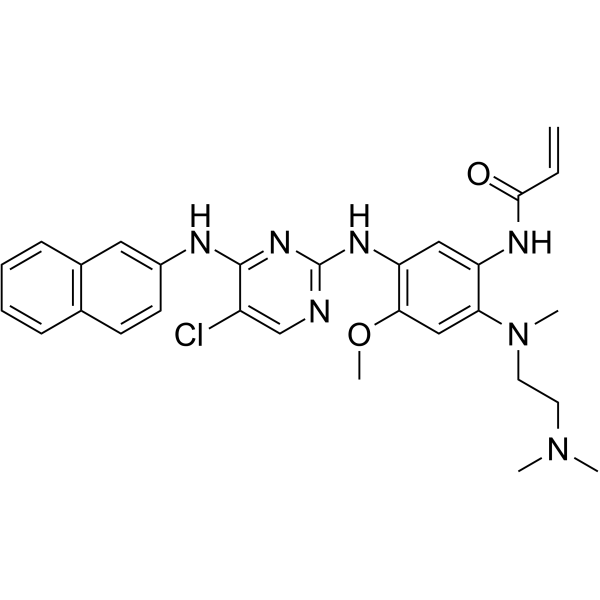
-
GC11691
AST-1306
AST-1306 (AST-1306) is an orally active and irreversible EGFR and ErbB2 inhibitor with IC50s of 0.5 and 3 nM, respectively. AST-1306 also inhibits ErbB4 with an IC50 of 0.8 nM. AST-1306 is an anilino-quinazoline compound and has anti-cancer activity.
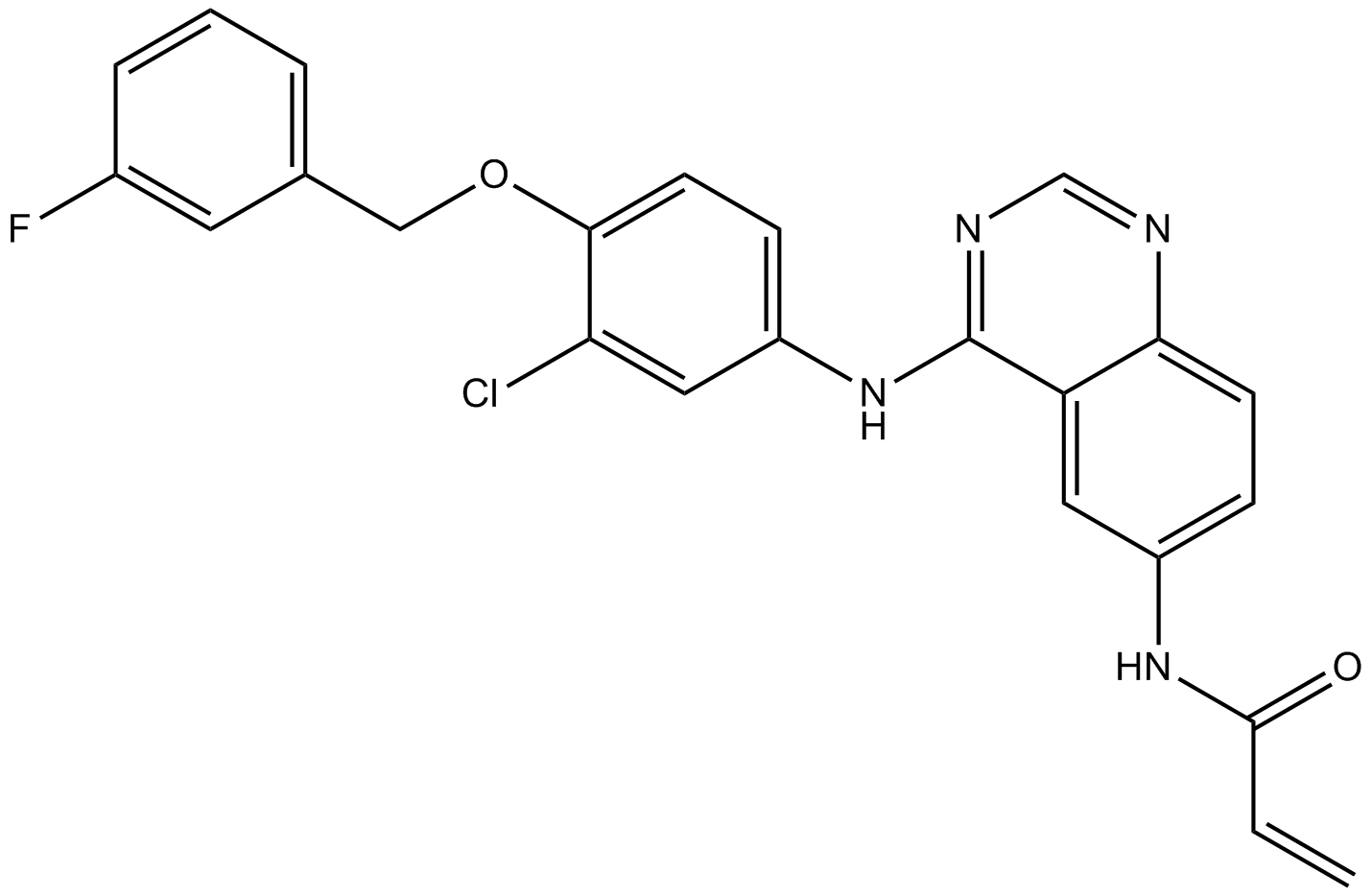
-
GC15669
AST-1306 TsOH
AST-1306 TsOH (AST-1306 (TsOH)) is an orally active and irreversible EGFR and ErbB2 inhibitor with IC50s of 0.5 and 3 nM, respectively. AST-1306 TsOH also inhibits ErbB4 with an IC50 of 0.8 nM. AST-1306 TsOH is an anilino-quinazoline compound and has anti-cancer activity
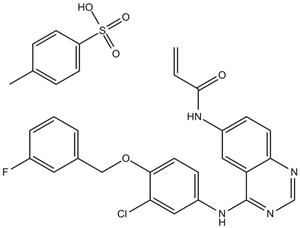
-
GC33096
AST2818 mesylate
Alflutinib (Furmonertinib) mesylate is is a potent inhibitor of EGFR. Alflutinib (Furmonertinib) mesylate inhibits EGFR active mutations as well as the T790M acquired resistant mutation. Alflutinib (Furmonertinib) mesylate has the potential for the research of cancer diseases, especially non-small cell lung cancer (NSCLC).
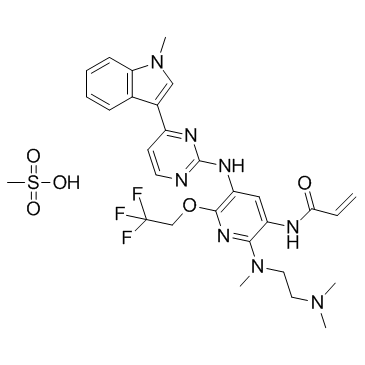
-
GC62481
AST5902 trimesylate
AST5902 trimesylate is the principal metabolite of Alflutinib (AST2818) both in vitro and in vivo. AST5902 trimesylate exerts antineoplastic activity. Alflutinib is an EGFR inhibitor.

-
GC35413
Astragaloside VI
Astragaloside VI could activate EGFR/ERK signalling pathway to improve wound healing.
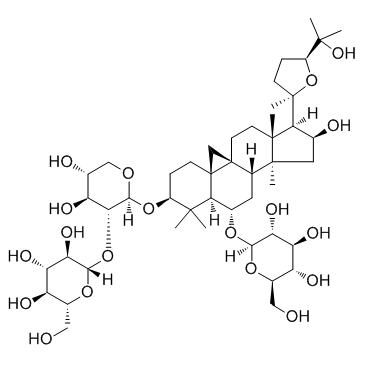
-
GC35435
AV-412
A dual inhibitor of EGFR and HER2
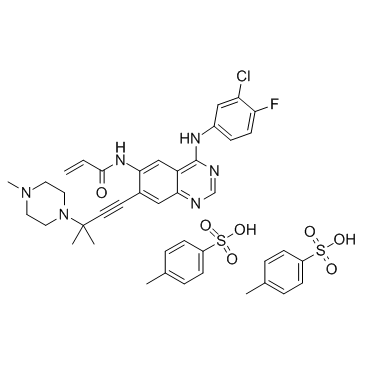
-
GC35436
AV-412 free base
AV-412 free base (MP-412 free base) is an EGFR inhibitor with IC50s of 0.75, 0.5, 0.79, 2.3, 19 nM for EGFR, EGFRL858R, EGFRT790M, EGFRL858R/T790M and ErbB2, respectively.
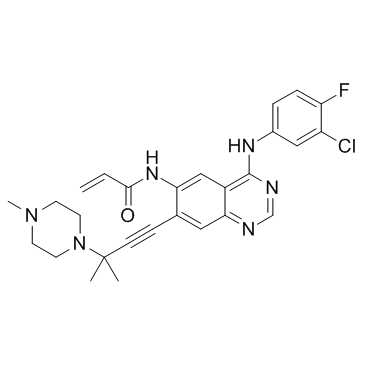
-
GC19044
Avitinib maleate
A pyrrolopyrimidine-based irreversible EGFR inhibitor
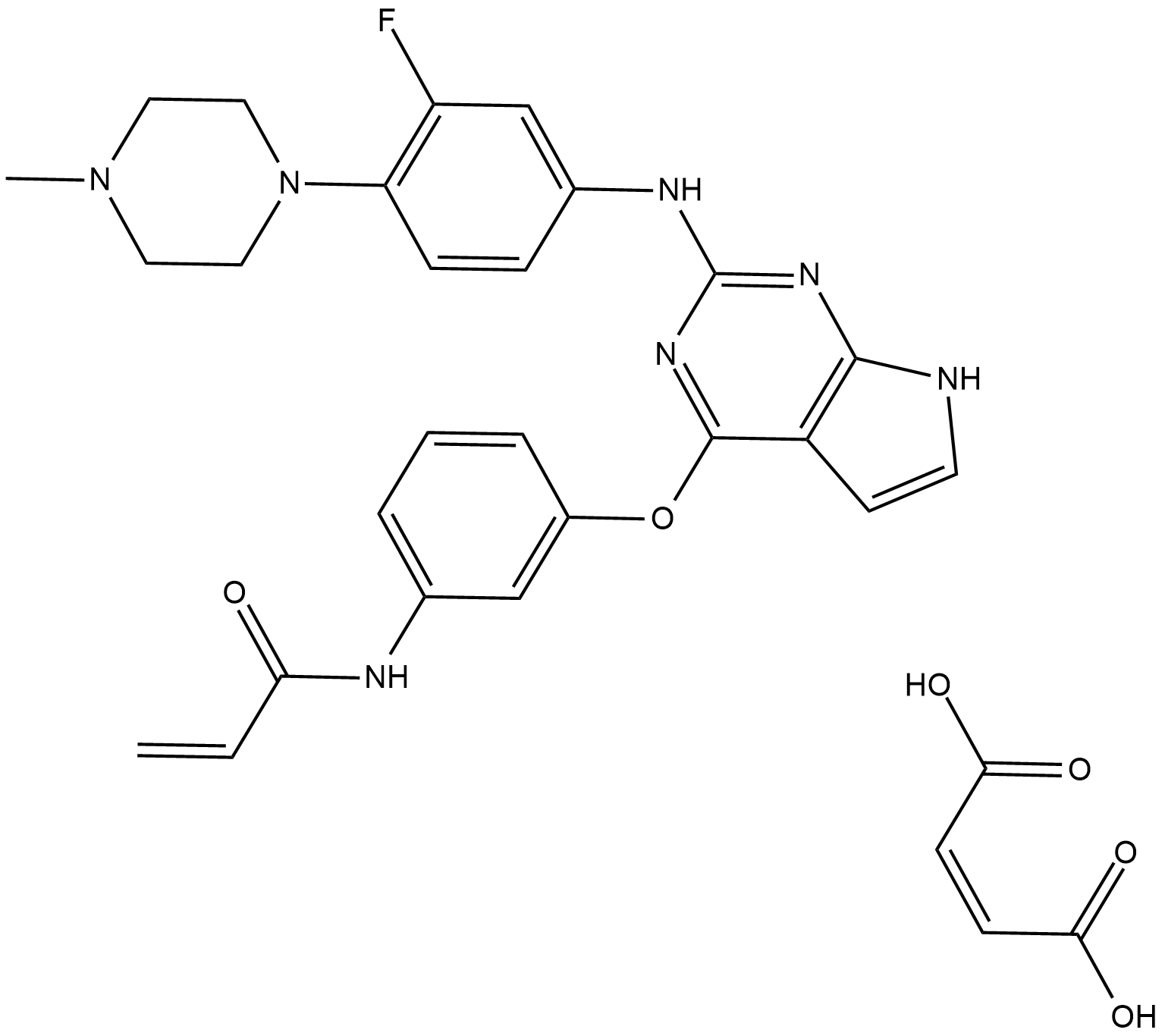
-
GC12955
AZ5104
EGFR inhibitor
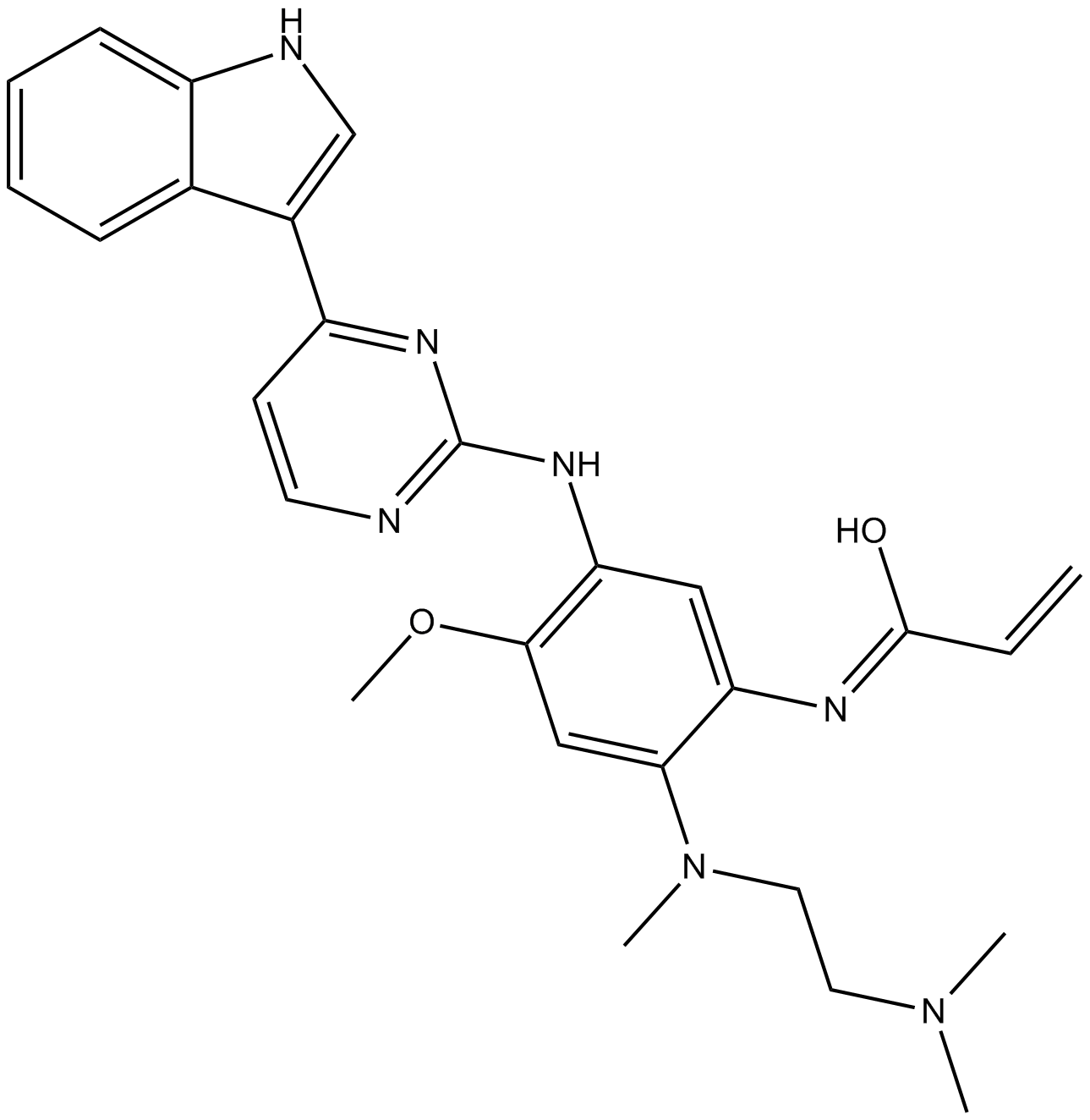
-
GC16308
AZD-9291
AZD-9291 (AZD9291) is a covalent, orally active, irreversible, and mutant-selective EGFR inhibitor with an apparent IC50 of 12 nM against L858R and 1 nM against L858R/T790M, respectively. AZD-9291 overcomes T790M-mediated resistance to EGFR inhibitors in lung cancer.
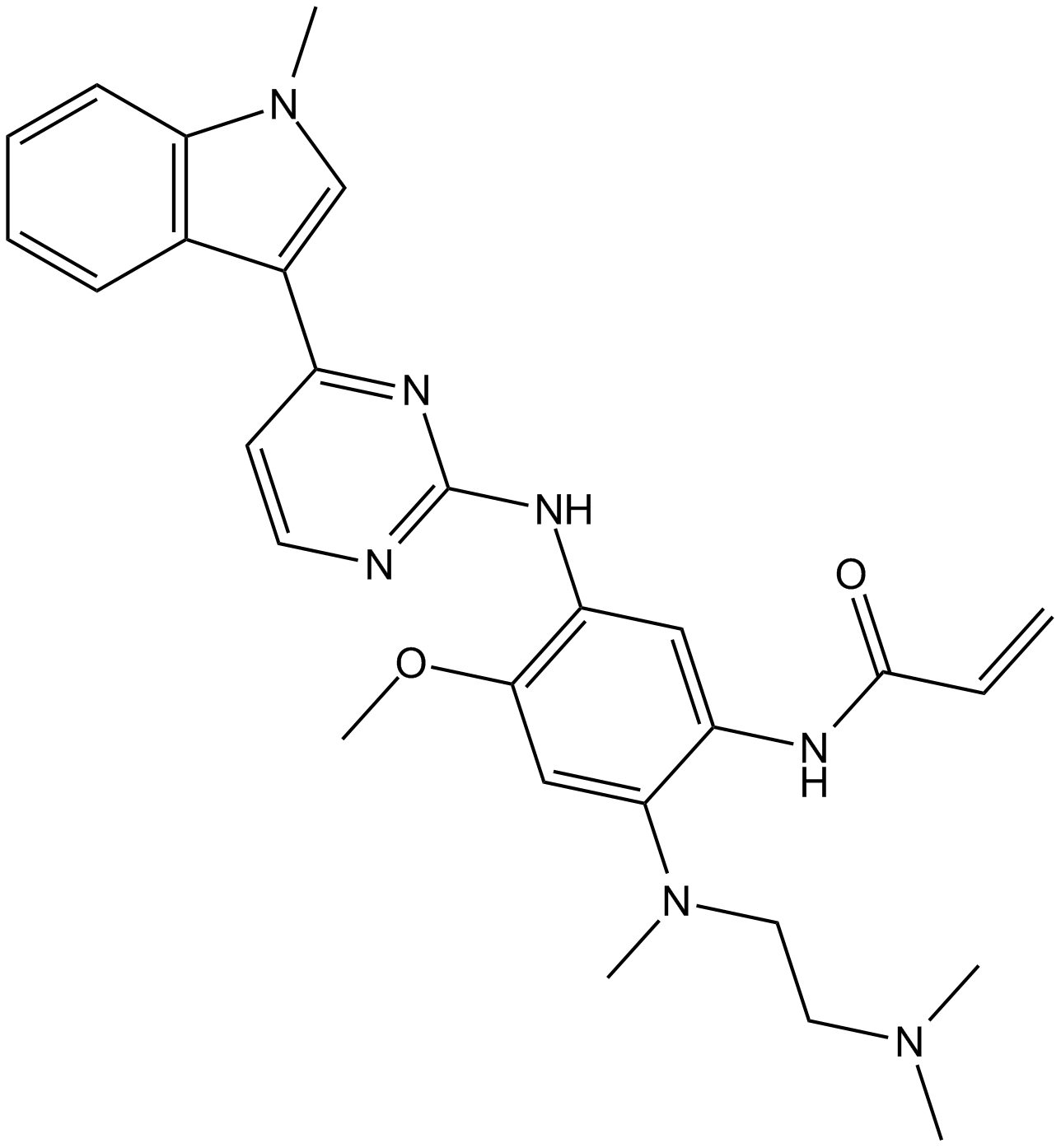
-
GC16698
AZD-9291 mesylate
AZD-9291 mesylate (AZD9291 mesylate) is a covalent, orally active, irreversible, and mutant-selective EGFR inhibitor with an apparent IC50 of 12 nM against L858R and 1 nM against L858R/T790M. Osimertinib overcomes T790M-mediated resistance to EGFR inhibitors in lung cancer.
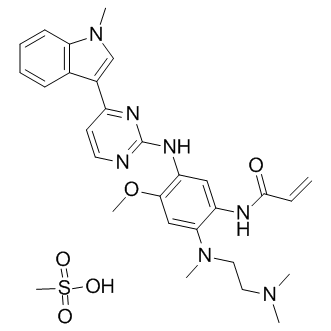
-
GC13143
AZD3759
AZD3759 (AZD3759) is a potent, orally active, central nervous system-penetrant, EGFR inhibitor. At Km ATP concentrations, the IC50s are 0.3, 0.2, and 0.2 nM for EGFRwt, EGFRL858R, and EGFRexon 19Del, respectively.
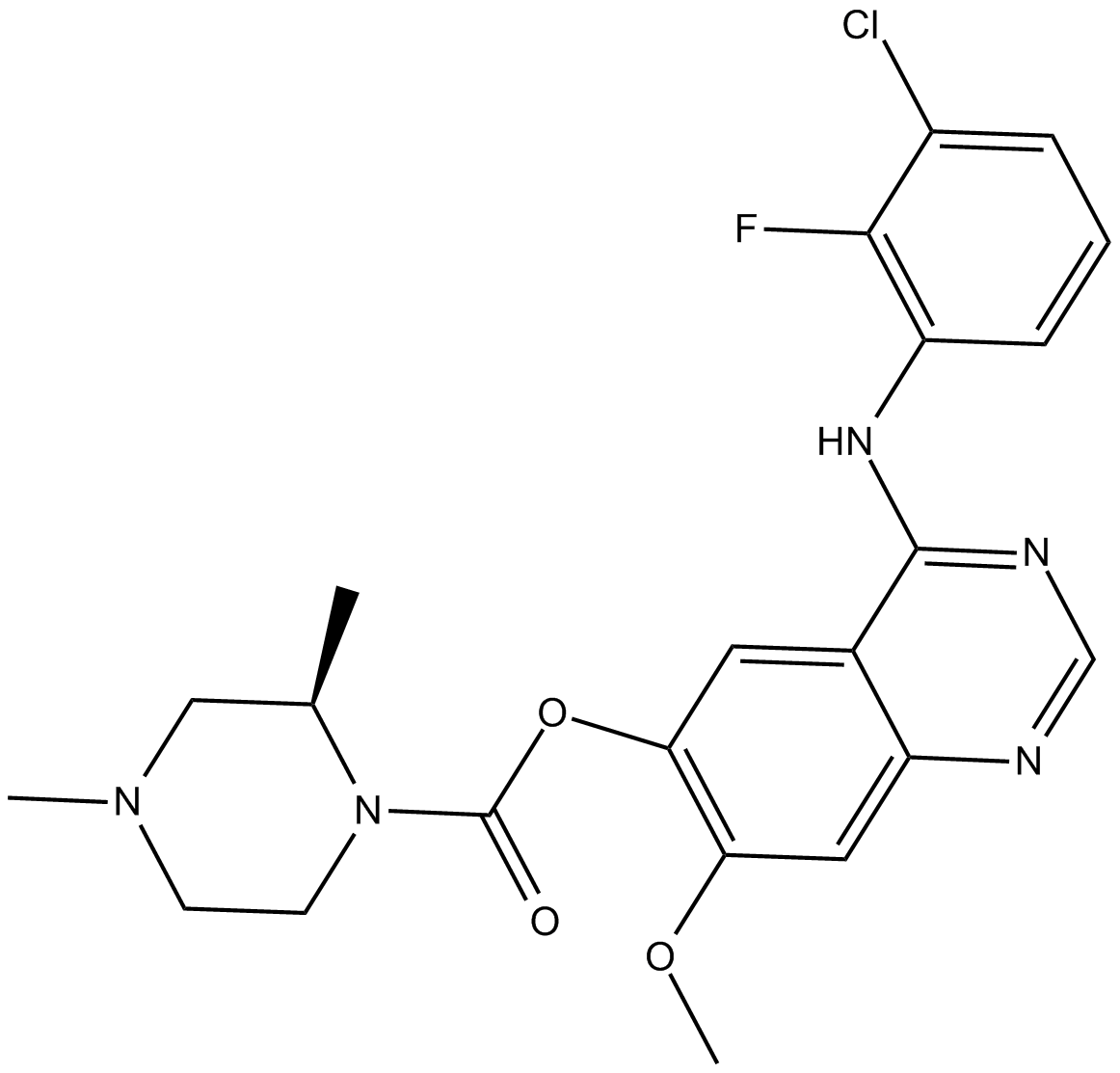
-
GC13761
AZD8931 (Sapitinib)
AZD8931 (Sapitinib) (AZD-8931) is a reversible, ATP competitive EGFR inhibitor of with IC50s of 4, 3 and 4 nM for EGFR, ErbB2 and ErbB3 in cells, respectively.
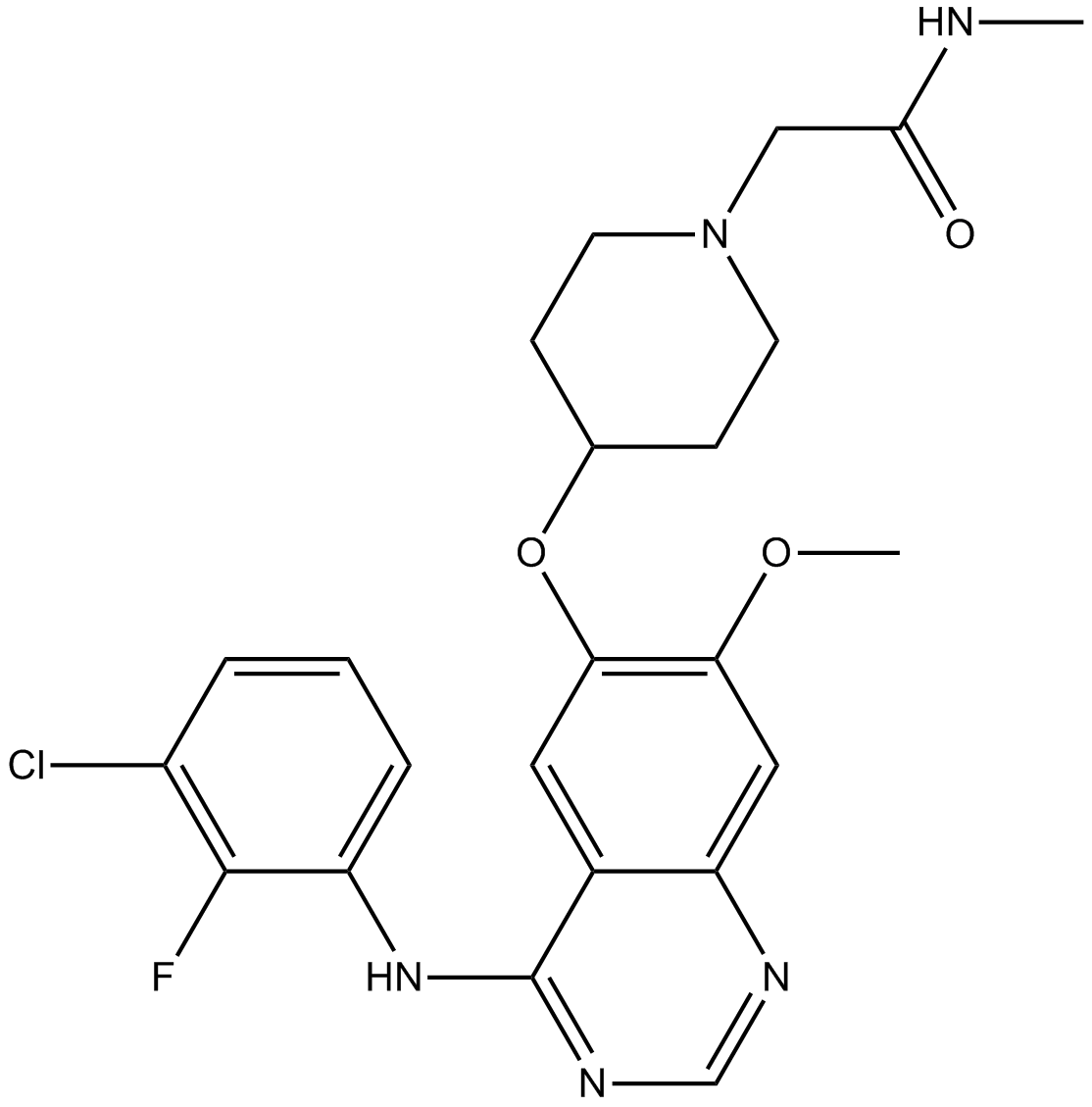
-
GC64302
BAY 2476568
BAY 2476568 is a potent and selective EGFR inhibitor, with IC50s of < 0.2 nM for wild-type EGFR and several mutations (EGFRR ex20insSVD, EGFRR ex20insASV, EGFRR ex20insNPG).
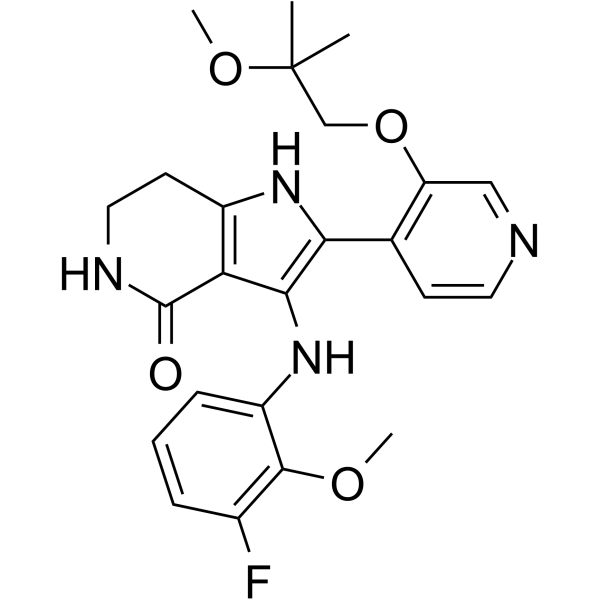
-
GC64017
Befotertinib
Befotertinib (D-0316) is the third-generation EGFR tyrosine kinase inhibitor. Befotertinib can be used for the research of EGFR T790M-positive non-small cell lung cancer (NSCLC).
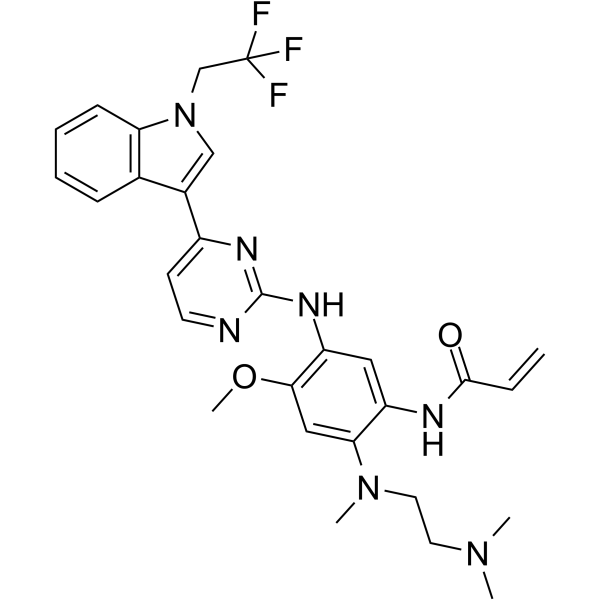
-
GC33172
BGB-102 (JNJ-26483327)
BGB-102 (JNJ-26483327) is a potent multi-kinase inhibitor against EGFR, HER2, and HER4 with IC50s of 9.6 nM, 18 nM and 40.3 nM, respectively.
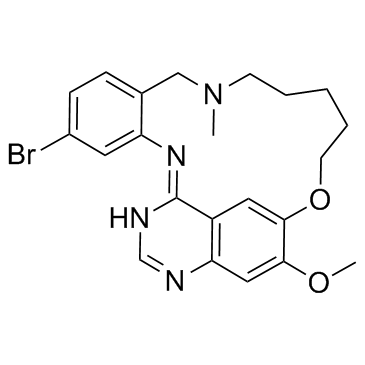
-
GC19066
BGB-283
BGB-283 is a novel and potent Raf Kinase and EGFR inhibitor with IC50 values of 23 and 29 nM for recombinant BRafV600E and EGFR, respectively.
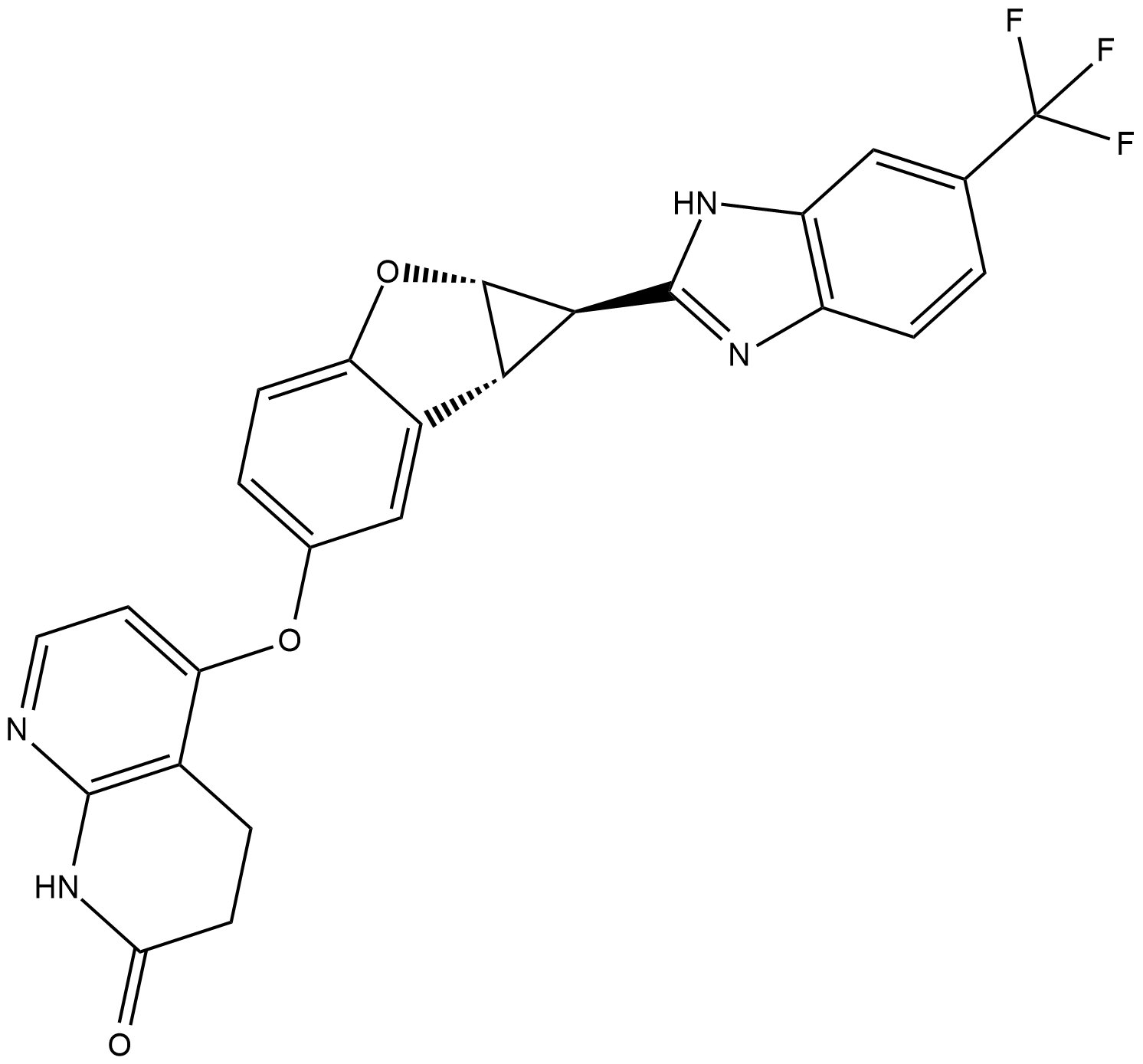
-
GC38402
BI-4020
A fourth-generation and non-covalent EGFR tyrosine kinase inhibitor
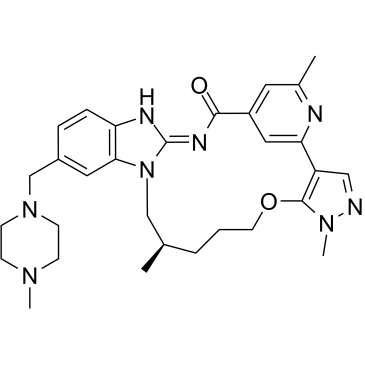
-
GC10815
BIBU 1361 dihydrochloride
EGFR inhibitor
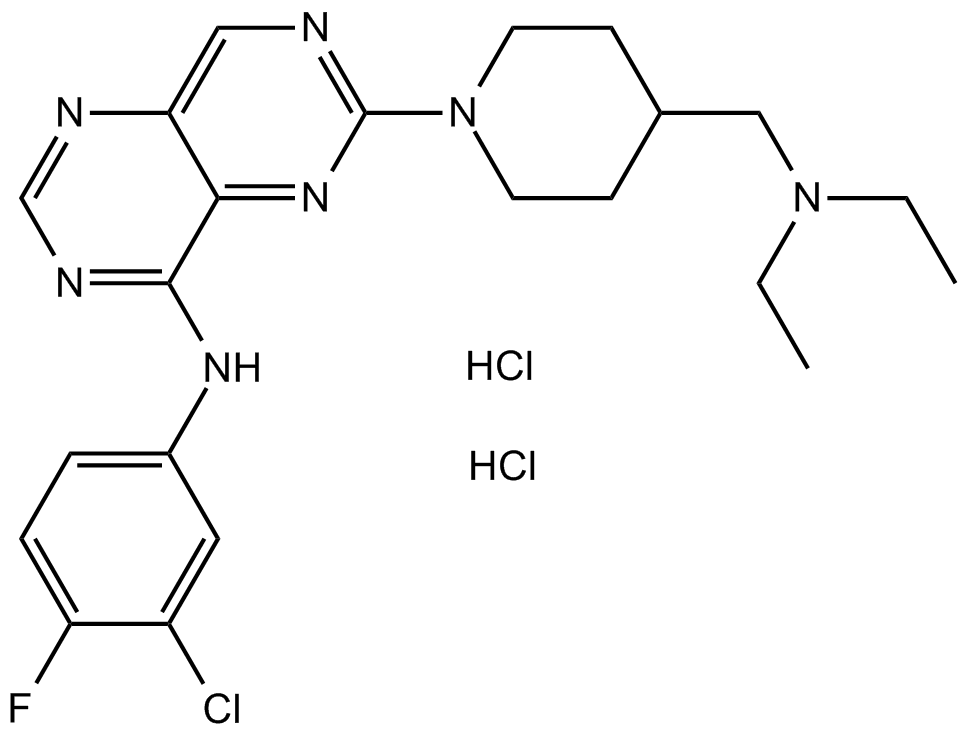
-
GC10087
BIBX 1382
An EGFR inhibitor
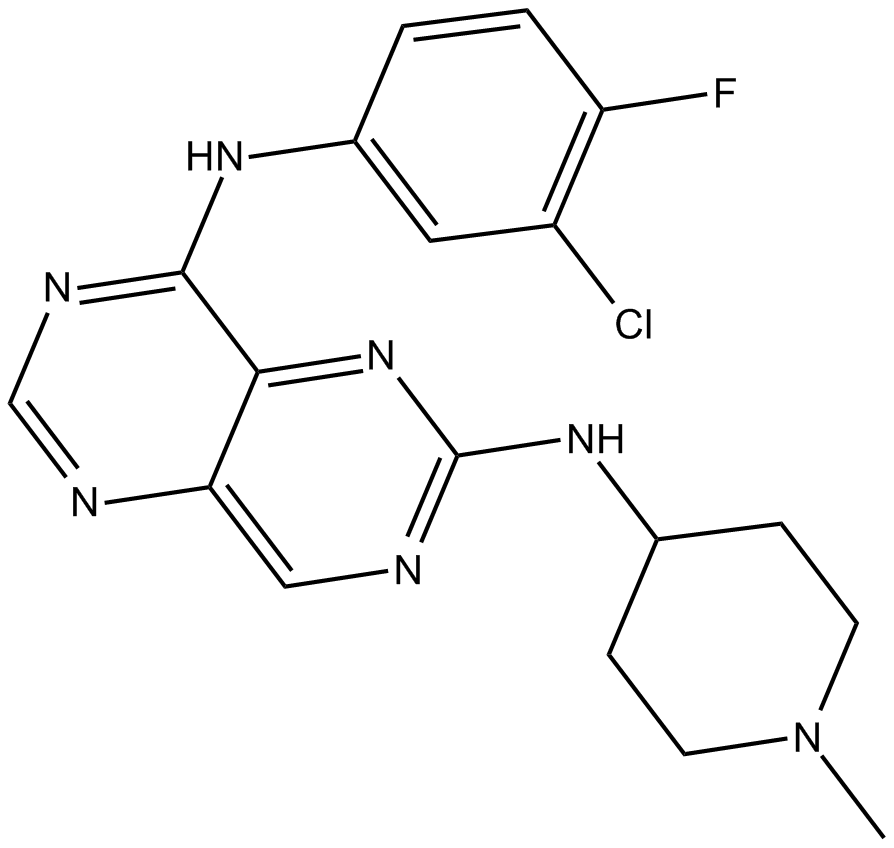
-
GC50026
BIBX 1382 dihydrochloride
Highly selective EGFR-kinase inhibitor
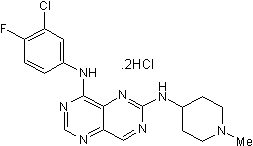
-
GC63910
BLU-945
BLU-945 is a potent, highly selective, reversible and orally active epidermal growth factor receptor (EGFR) tyrosine kinase inhibitor (TKIs). BLU-945 can effectively inhibit EGFR with L858R and/or exon 19 deletion mutation, T790M mutation and C797S mutation. BLU-945 can be used for the research of lung cancer including non-small cell lung cancer (NSCLC).
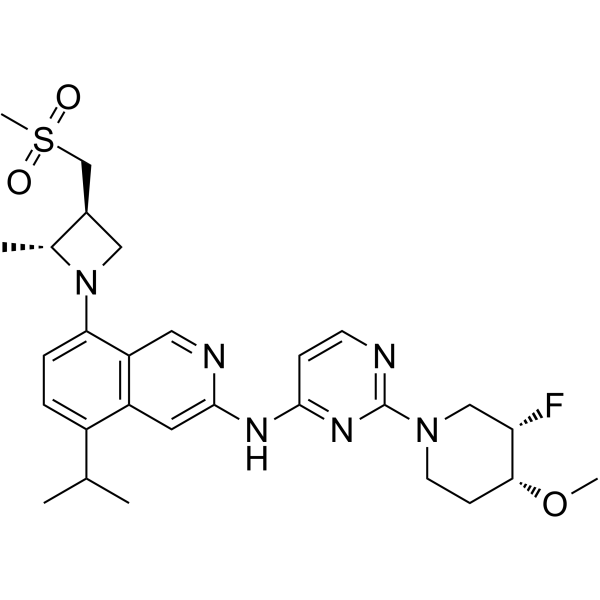
-
GC14136
BMS 599626 dihydrochloride
EGFR and ErbB2 inhibitor,potent and selective
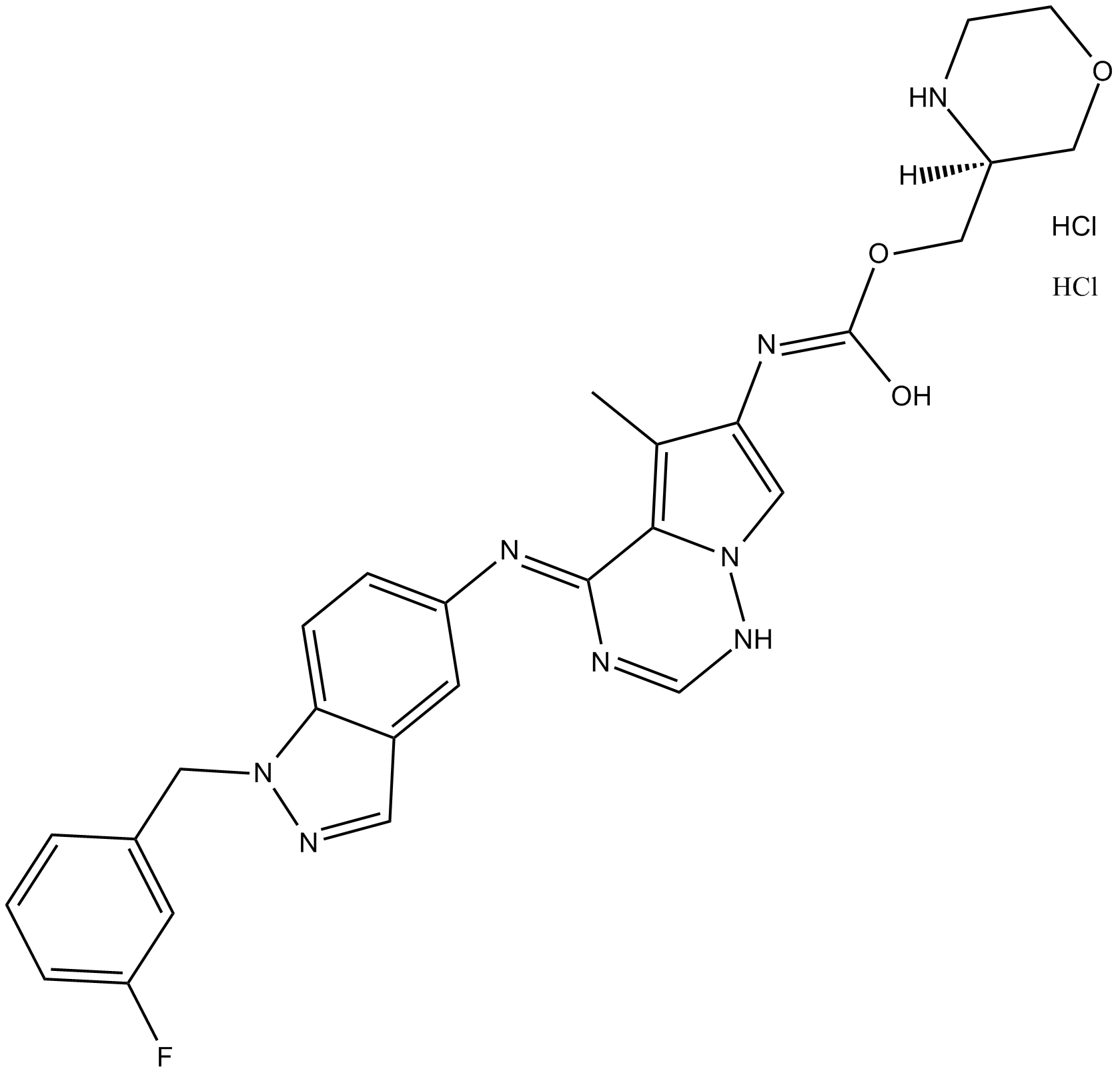
-
GC10606
BMS-599626 Hydrochloride
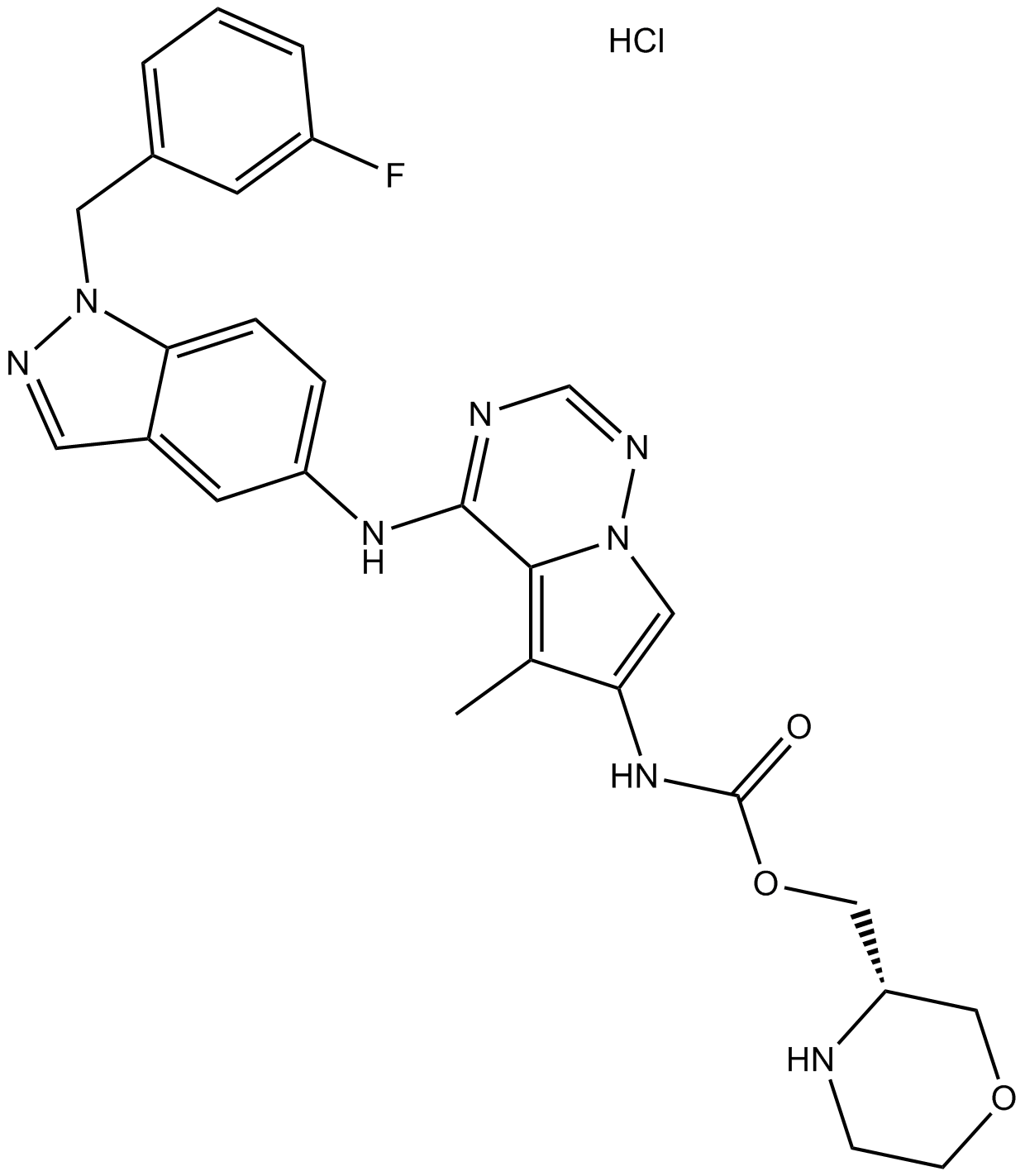
-
GC13873
BMS-690514
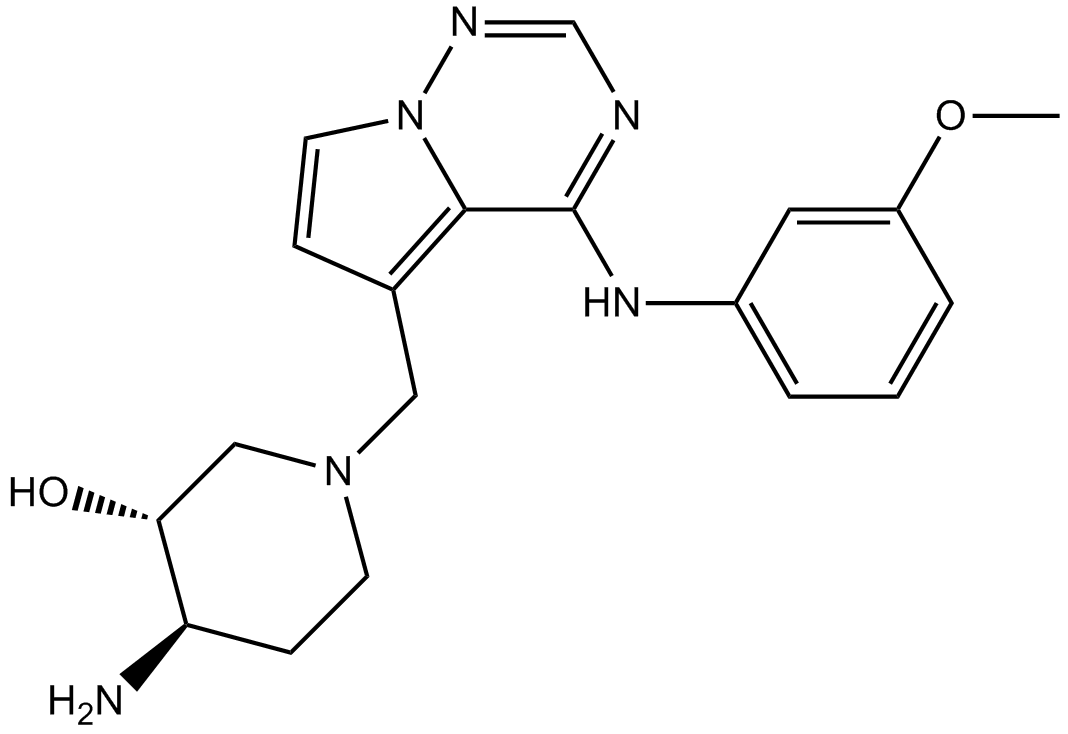
-
GC10944
Butein
Protein kinase inhibitor
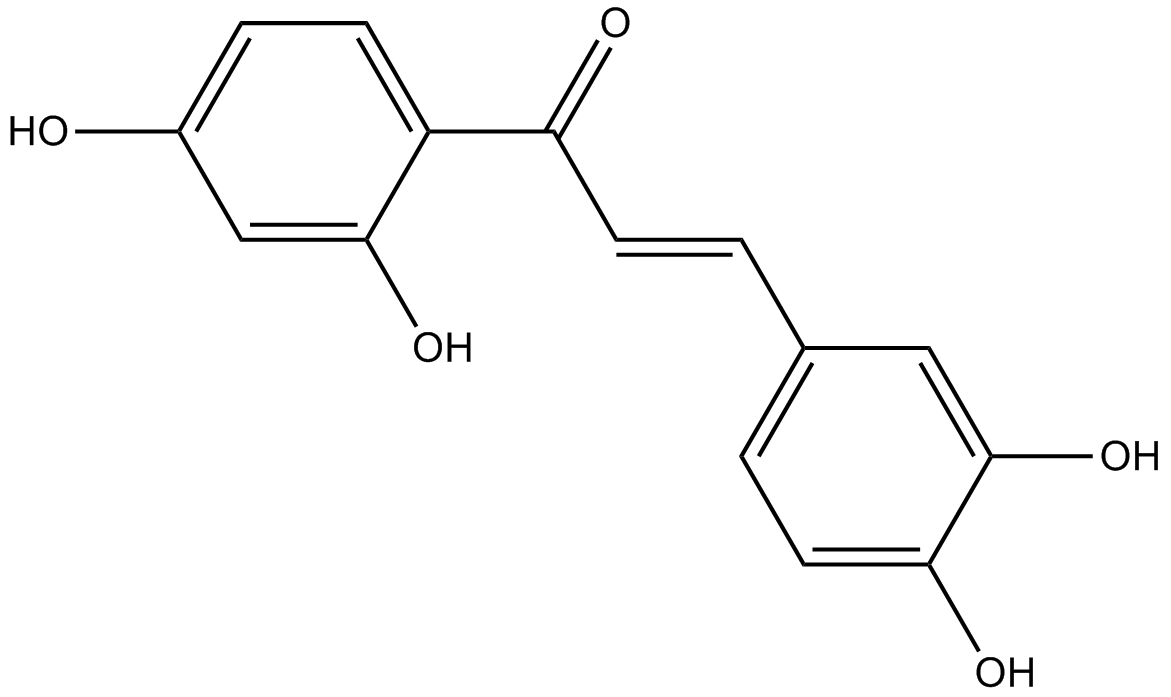
-
GC12910
Canertinib (CI-1033)
Canertinib (CI-1033) (CI-1033;PD-183805) is a potent and irreversible EGFR inhibitor; inhibits cellular EGFR and ErbB2 autophosphorylation with IC50s of 7.4 and 9 nM.
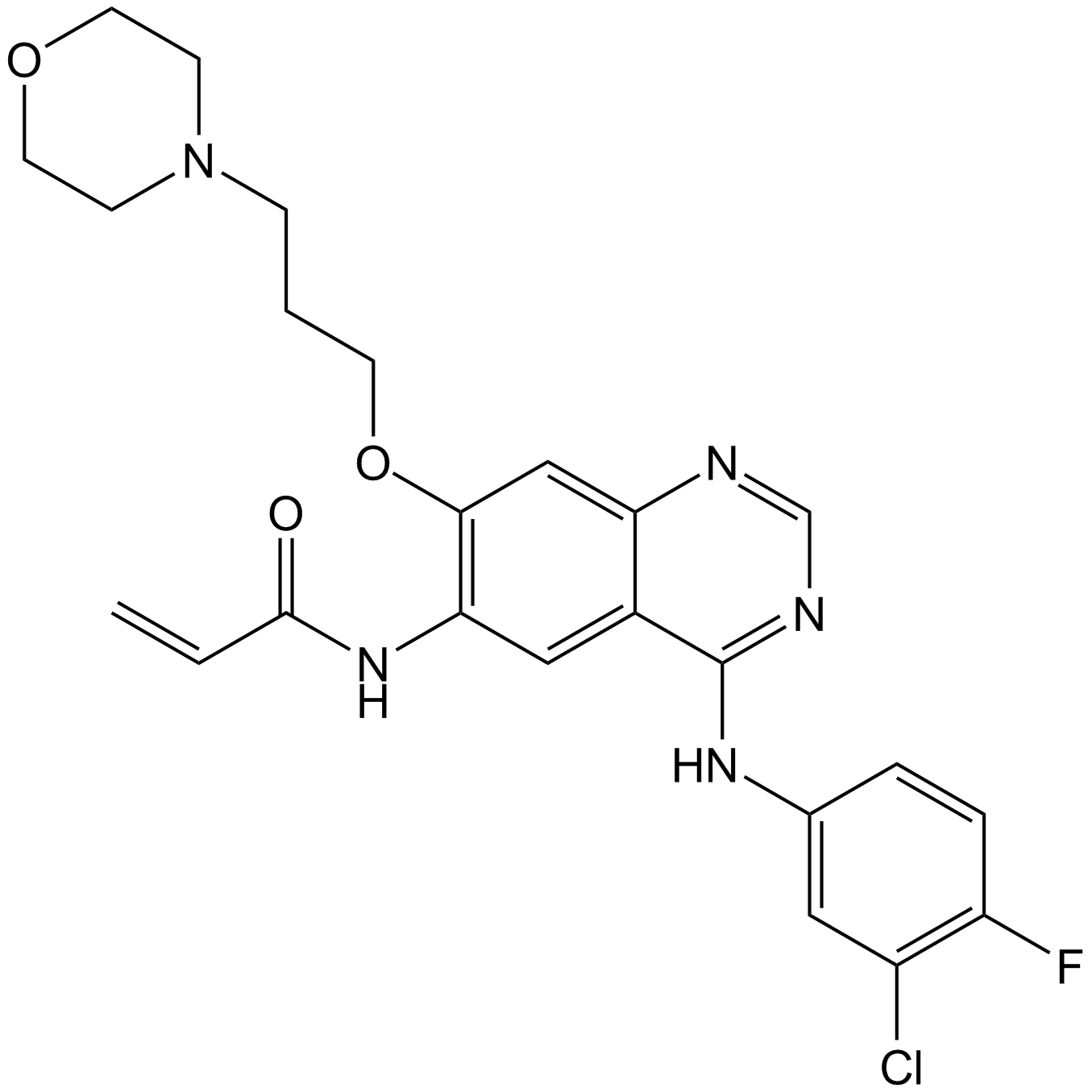
-
GC12087
Canertinib dihydrochloride
A pan-ErbB tyrosine kinase inhibitor
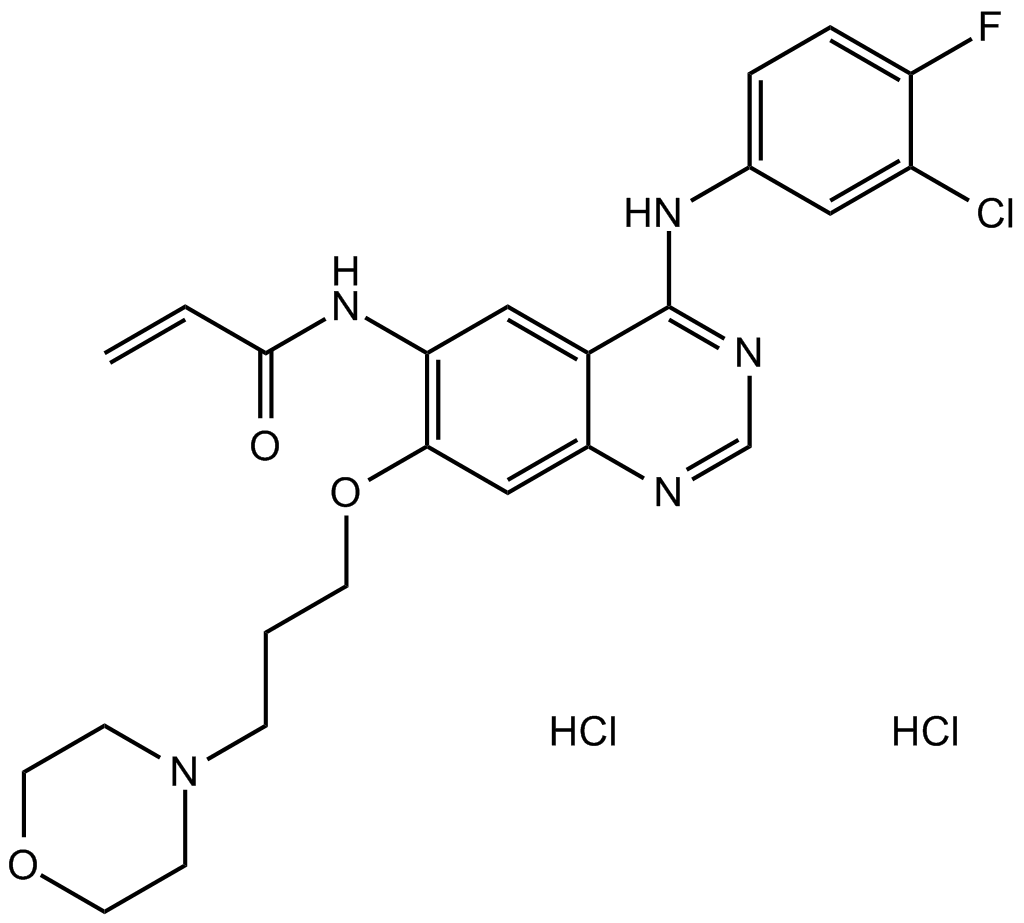
-
GC34217
Cetuximab (C225)
Cetuximab (C225) (C225) is a human IgG1 monoclonal antibody that inhibits epidermal growth factor receptor (EGFR), with a Kd of 0.201 nM for EGFR by SPR. Cetuximab (C225) has potent antitumor activity.

-
GC15950
CGP 52411
EGFR inhibitor
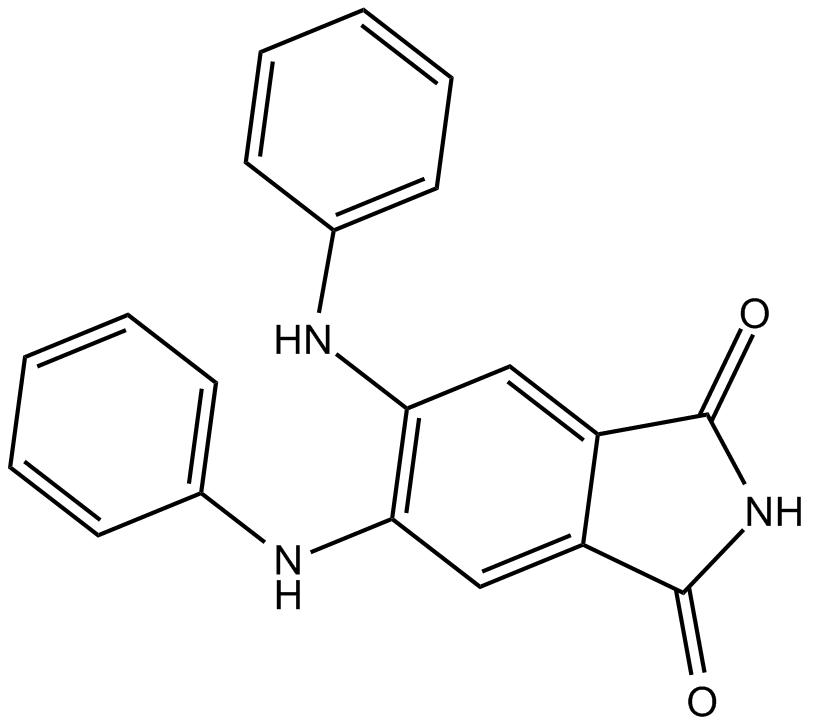
-
GC25219
CH7233163
CH7233163 is a non-covalent ATP competitive inhibitor of EGFR-tyrosine kinase with antitumor activities against tumor with EGFR-Del19/T790M/C797S.
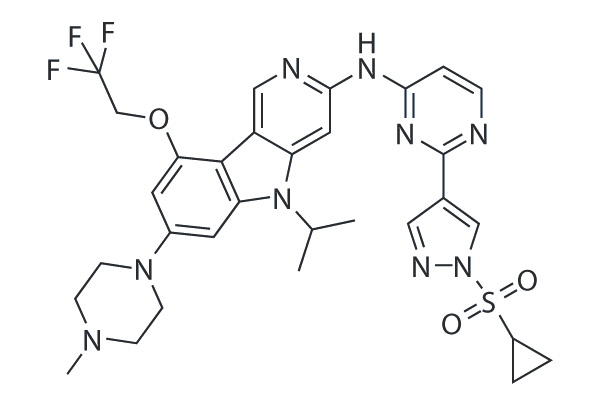
-
GC35684
CHMFL-EGFR-202
CHMFL-EGFR-202 is a potent, irreversible inhibitor of epidermal growth factor receptor (EGFR) mutant kinase, with IC50s of 5.3 nM and 8.3 nM for drug-resistant mutant EGFR T790M and WT EGFR kinases, respectively. CHMFL-EGFR-202 exhibits ?10-fold selectivity for EGFR L858R/T790M against the EGFR wild-type in cells. CHMFL-EGFR-202 adopts a covalent “DFG-in-C-helix-out” inactive binding conformation with EGFR, with strong antiproliferative effects against EGFR mutant-driven nonsmall-cell lung cancer (NSCLC) cell lines.
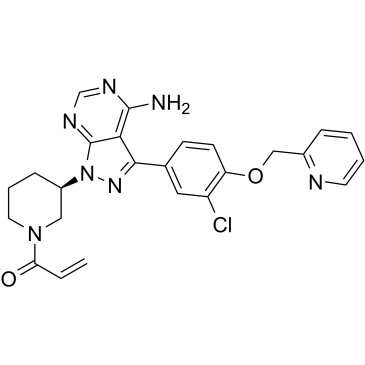
-
GN10327
Chrysophanol
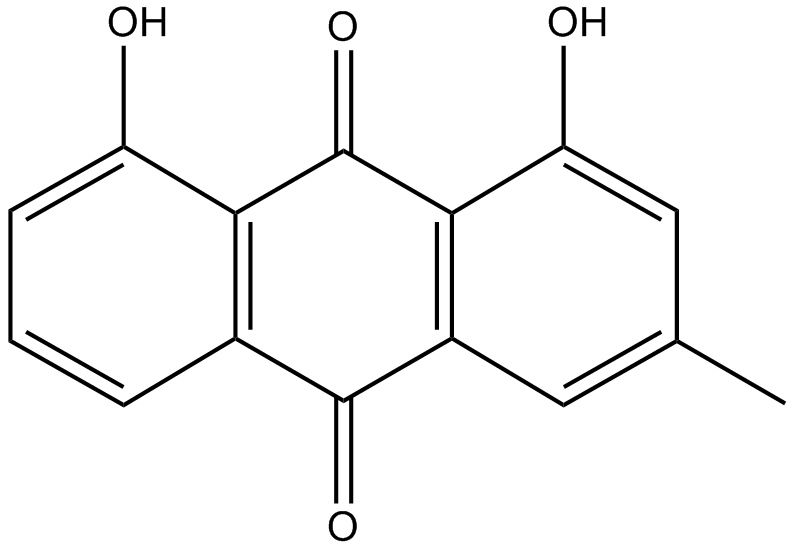
-
GC17790
CL-387785 (EKI-785)
CL-387785 (EKI-785)(EKI785; WAY-EKI 785) is an irreversible inhibitor of EGFR with IC50 of 370 pM.
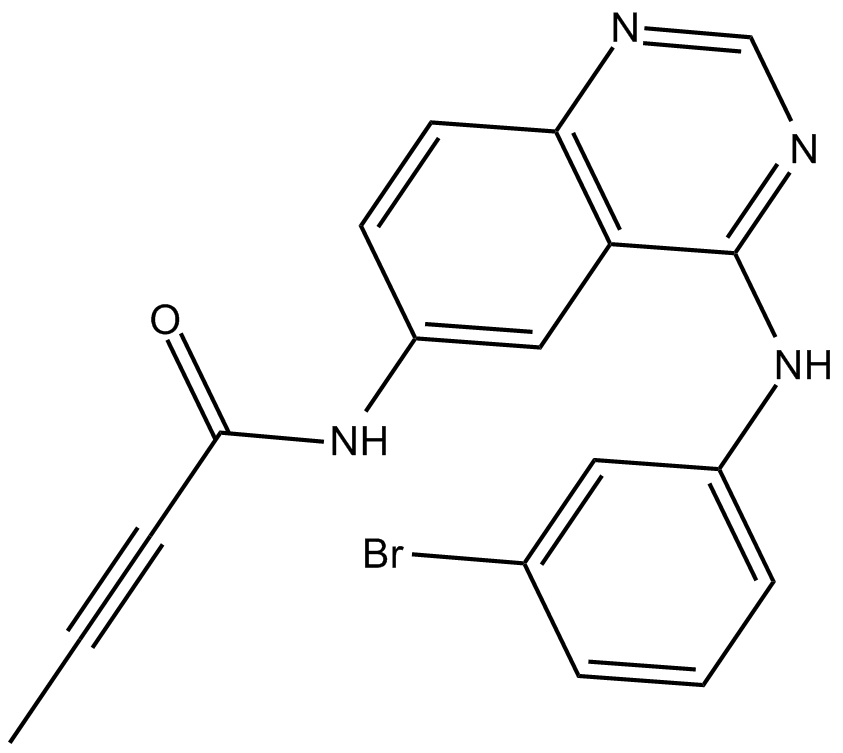
-
GC11264
CNX-2006
mutant-EGFR inhibitor, selective and irreversible
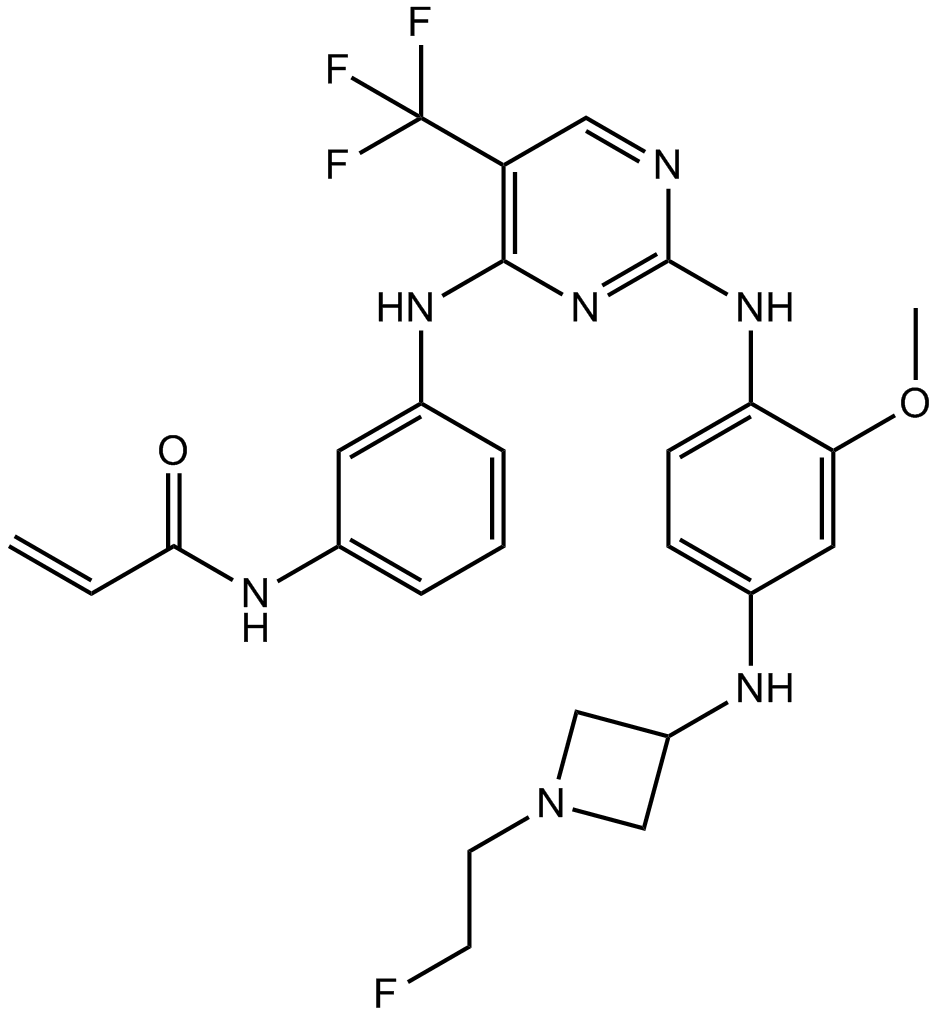
-
GC14695
CO-1686 (AVL-301)
A selective inhibitor of mutant EGFR
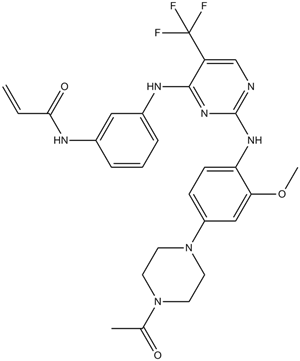
-
GC12837
Compound 56
A potent EGFR inhibitor
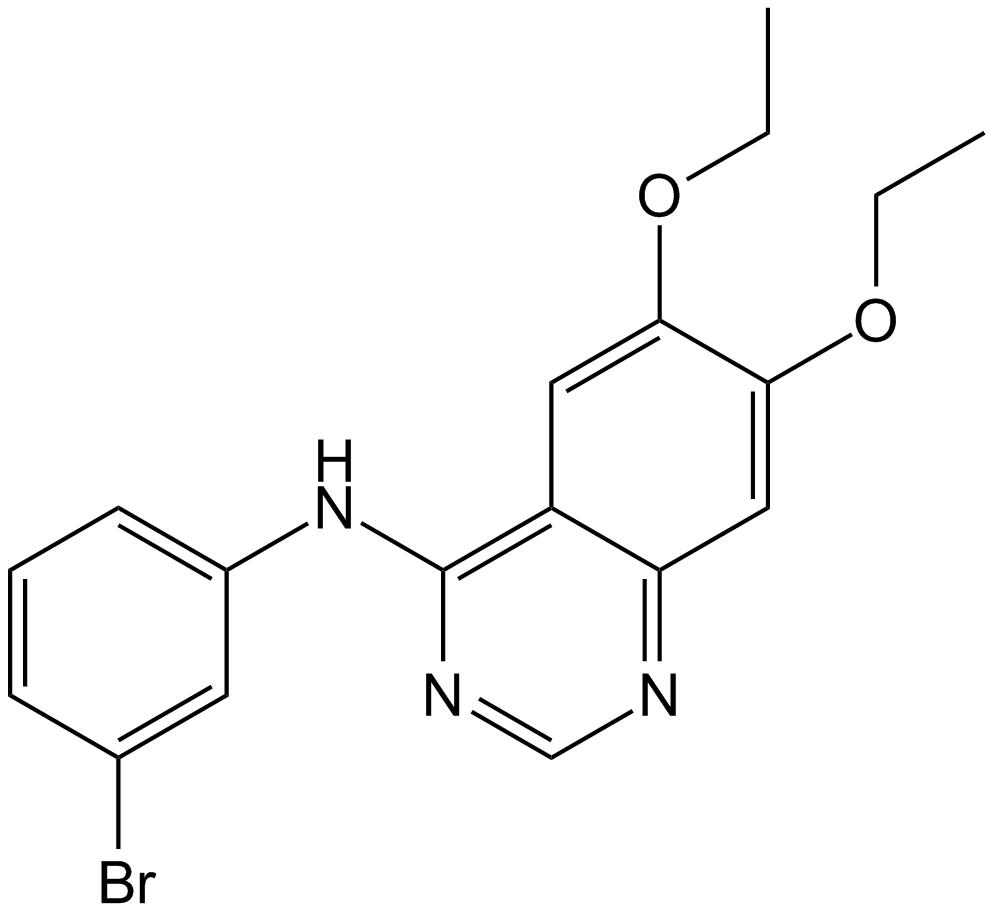
-
GC13091
CP-724714
HER2 inhibitor,potent and selective
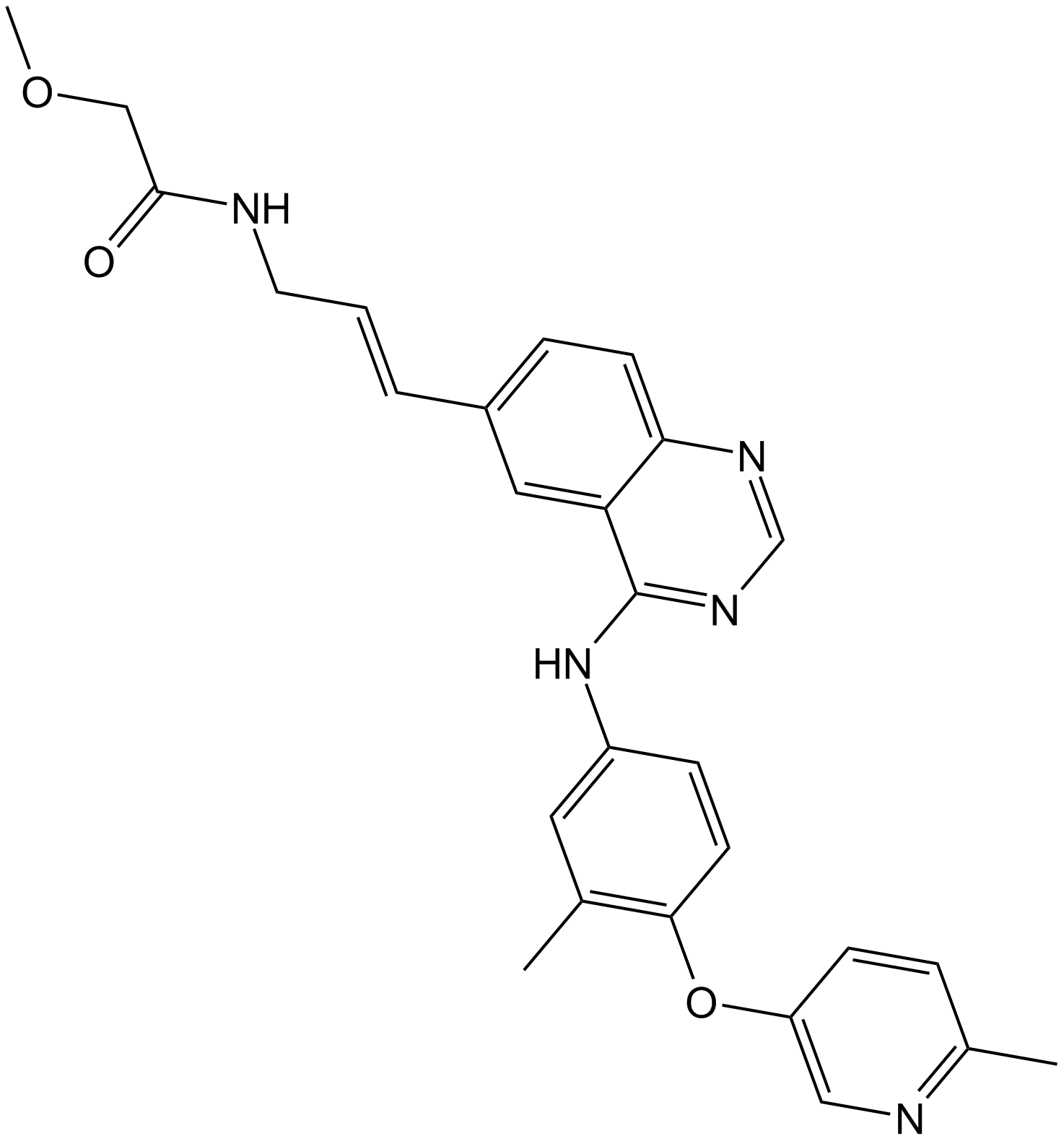
-
GC16008
CUDC-101
A multi-target inhibitor of HDACs, EGFR, and HER2
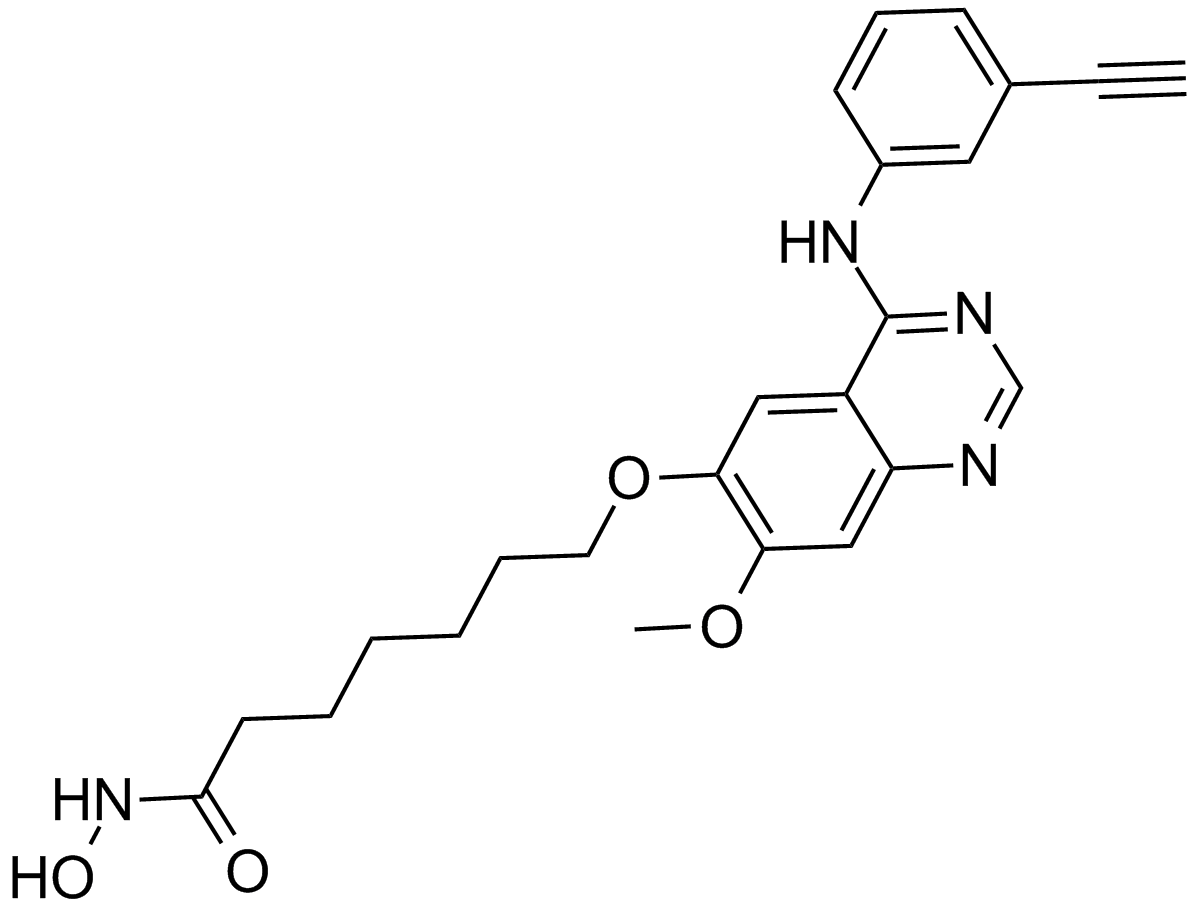
-
GC38180
Cyasterone
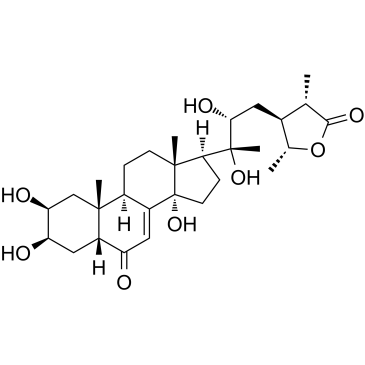
-
GC10225
Dacomitinib (PF299804, PF299)
Dacomitinib (PF299804, PF299) (PF-00299804) is a specific and irreversible inhibitor of the ERBB family of kinases with IC50s of 6 nM, 45.7 nM and 73.7 nM for EGFR, ERBB2, and ERBB4, respectively.
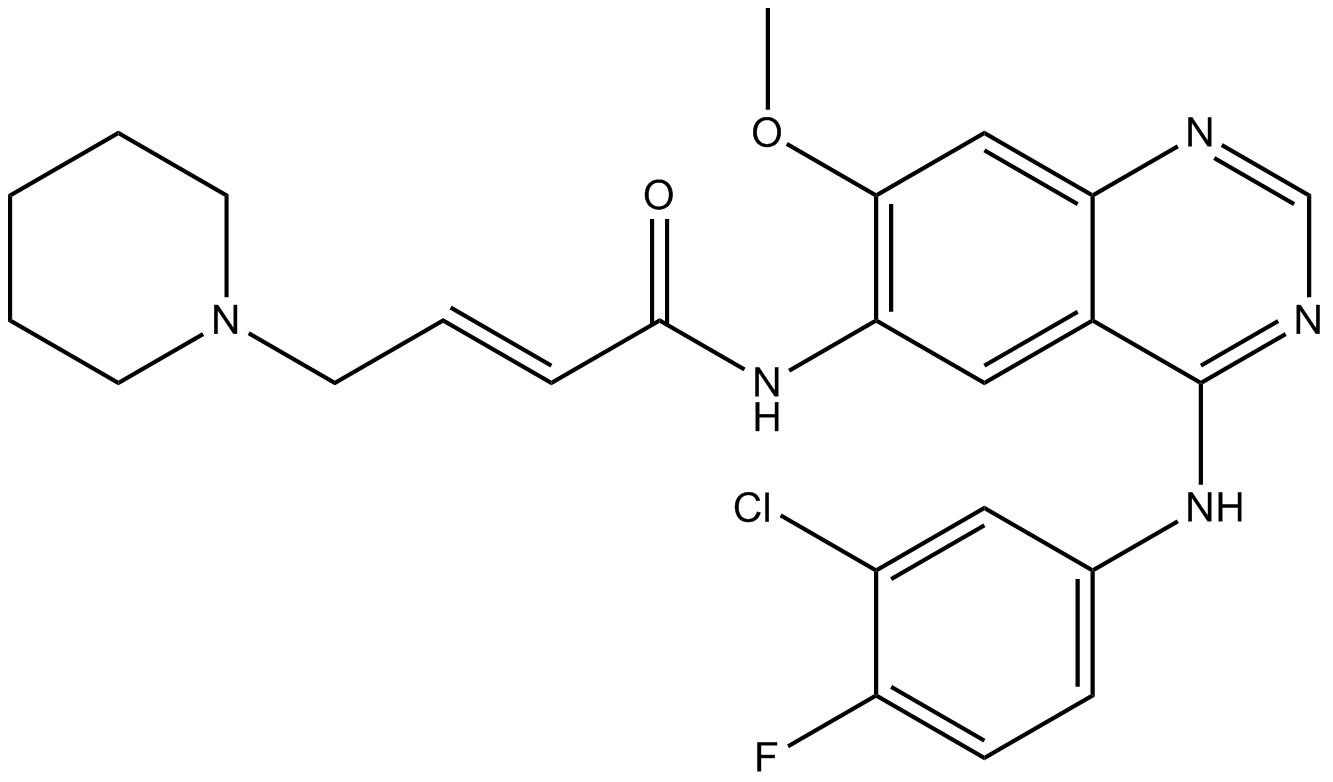
-
GN10336
Daphnetin
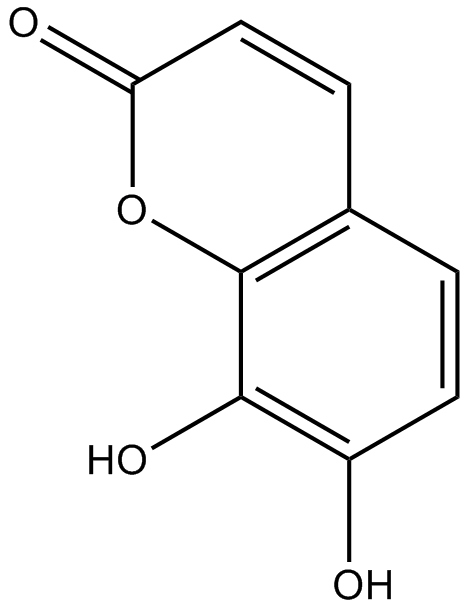
-
GC62569
DBPR112
DBPR112 is an orally active furanopyrimidine-based EGFR inhibitor with IC50s of 15 nM and 48 nM for EGFRWT and EGFRL858R/T790M, respectively. DBPR112 can occupy the ATP-binding site. DBPR112 has significant antitumor efficacy.
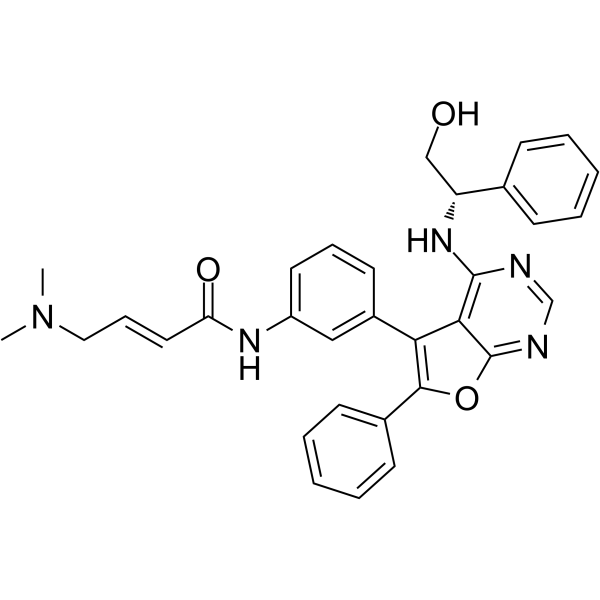
-
GC64039
Disitamab vedotin
Disitamab vedotin (RC48) is an antibody-drug conjugate (ADC) comprising a monoclonal antibody against human epidermal growth factor receptor 2 (HER2) conjugated via a cleavable linker to the cytotoxic agent Monomethyl auristatin E (MMAE). Disitamab vedotin enhances antitumor immunity.
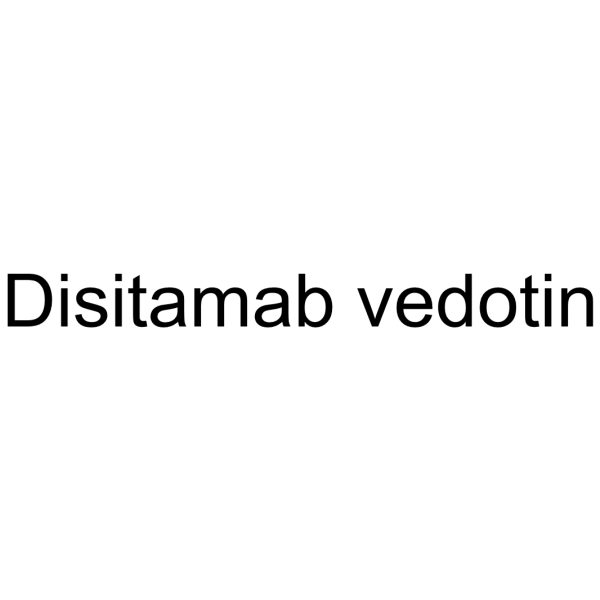
-
GC66432
EAI001
EAI001 is a potent, selective mutant epidermal growth factor receptor (EGFR) allosteric inhibitor with an IC50 value of 24 nM for EGFRL858R/T790M. EAI001 can be used for research of cancer.
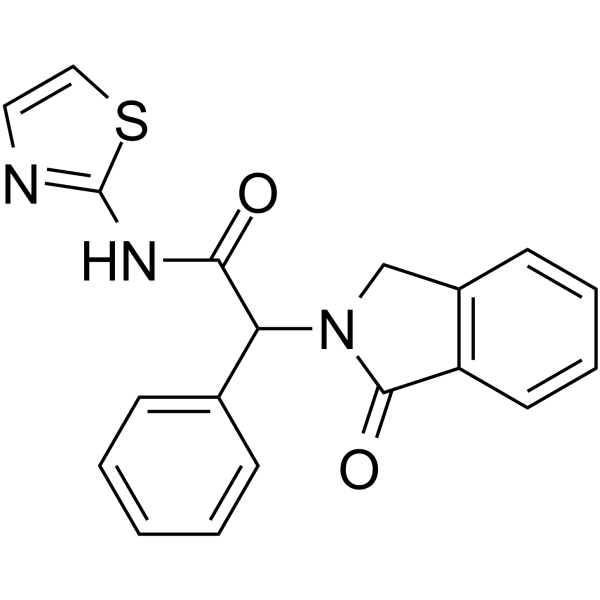
-
GC12281
EAI045
Inhibitor of L858R/T790M EGFR mutants
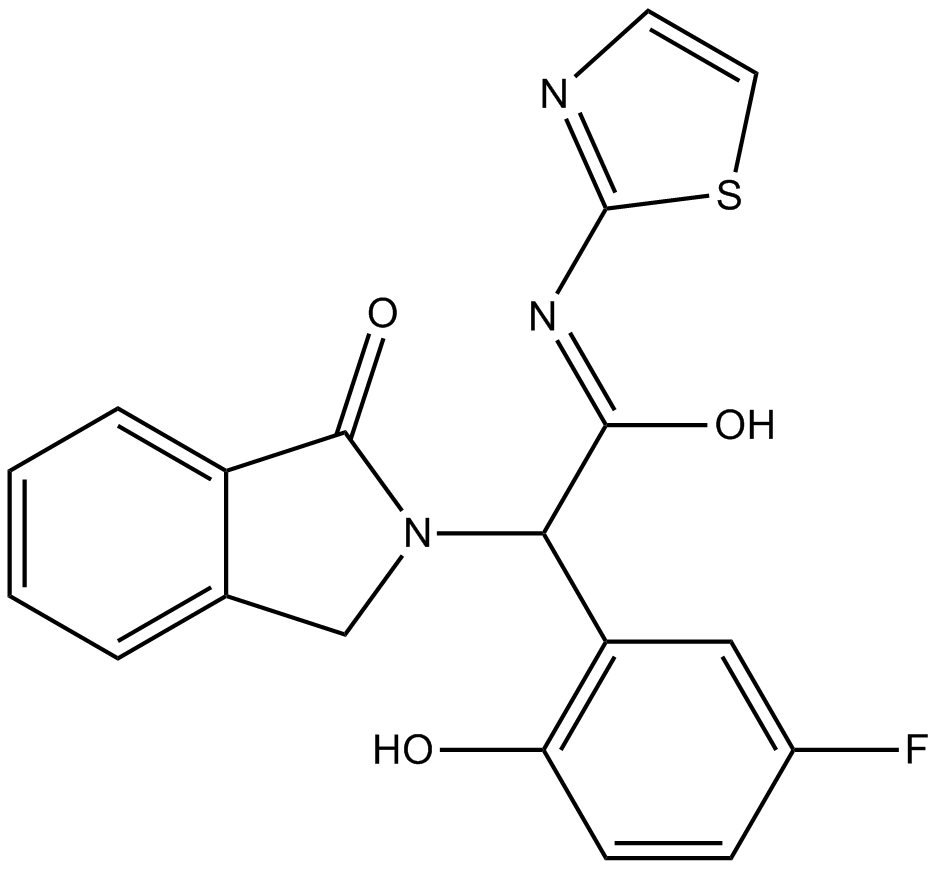
-
GC16321
EGF816
EGF816 (EGF816) is a covalent mutant-selective EGFR inhibitor, with Ki and Kinact of 31 nM and 0.222 min-1 on EGFR(L858R/790M) mutant, respectively.
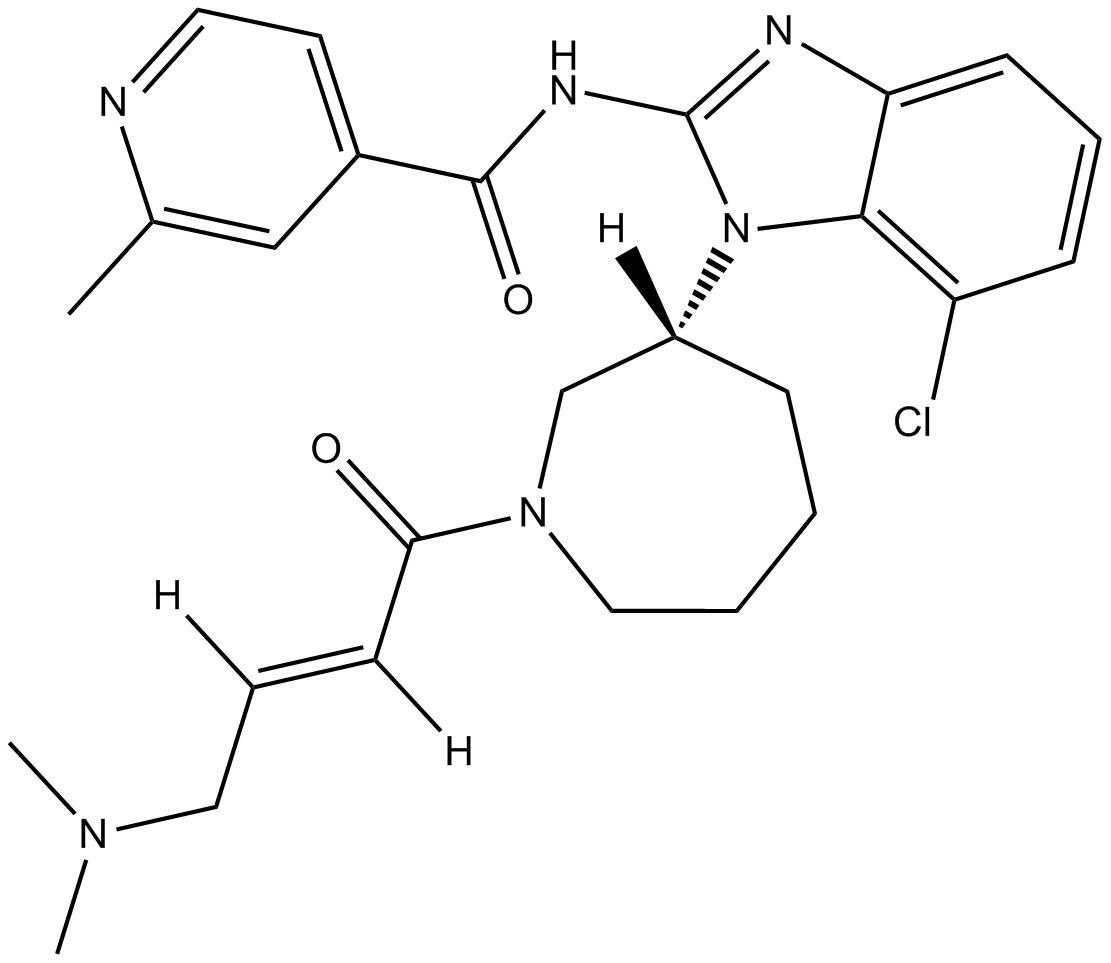
-
GC11312
EGFR Inhibitor
EGFR Inhibitor is a 4,6-disubstituted pyrimidine and is a potent, ATP-competitive, irreversible and highly selective EGFR inhibitor with an IC50of 21 nM. EGFR Inhibitor also inhibits mutant EGFRL858R and EGFRL861Q with IC50s of 63 nM and 4 nM, respectively. EGFR Inhibitor displays strong selectivity for EGFR over HER4 (IC50 = 7640 nM) and a panel of 55 other kinases. EGFR Inhibitor induces cells apoptosis and has antitumor activity.
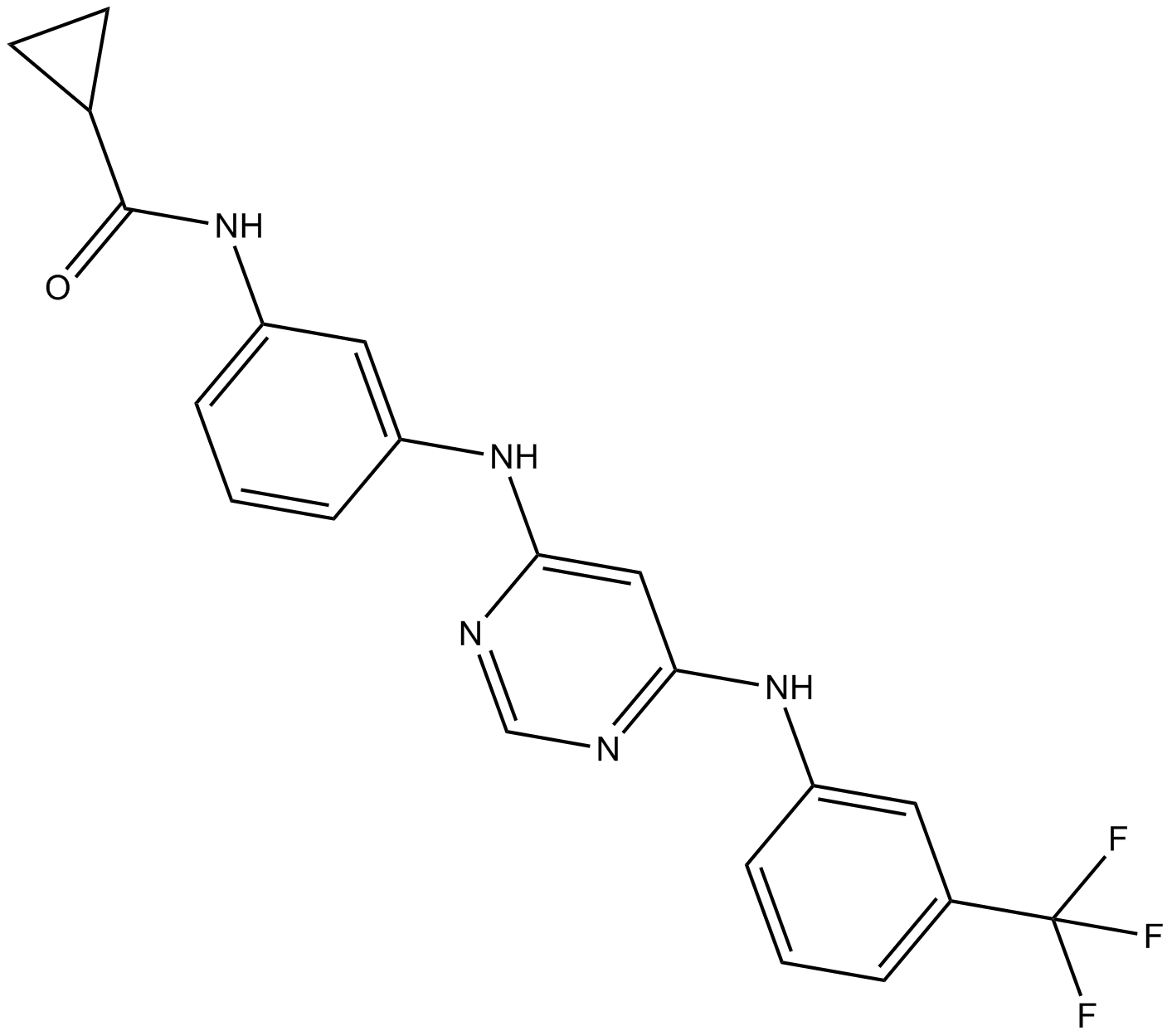
-
GC35965
EGFR mutant-IN-1
EGFR mutant-IN-1, a 5-methylpyrimidopyridone derivative, is a potent and selective EGFRL858R/T790M/C797S mutant inhibitor with an IC50 of 27.5 nM, while being a significantly less potent for EGFRWT (IC50 >1.0 μM).
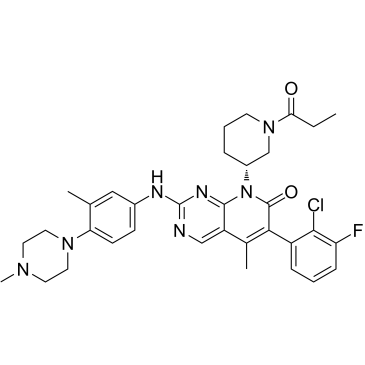
-
GC65572
EGFR Protein Tyrosine Kinase Substrate
EGFR Protein Tyrosine Kinase Substrate is a EGFR protein tyrosine kinase substrate.
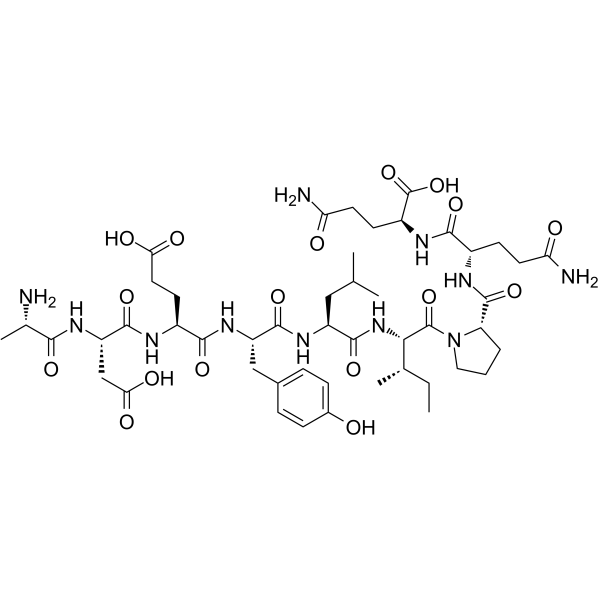
-
GC62562
EGFR-IN-11
EGFR-IN-11 is a fourth-generation EGFR-tyrosine kinase inhibitor (EGFR-TKI) with an IC50 of 18 nM for triple mutant EGFRL858R/T790M/C797S. EGFR-IN-11 significantly suppresses the EGFR phosphorylation, induce the apoptosis, and arrest cell cycle at G0/G1.
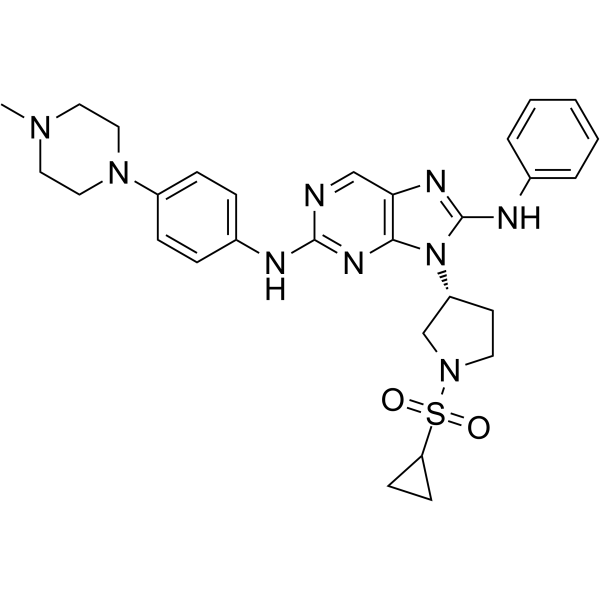
-
GC64497
EGFR-IN-17
EGFR-IN-17 is a potent and selective inhibitor of the epidermal growth factor receptor ( IC50 0.0002 μM) to overcome C797S-mediated resistance.
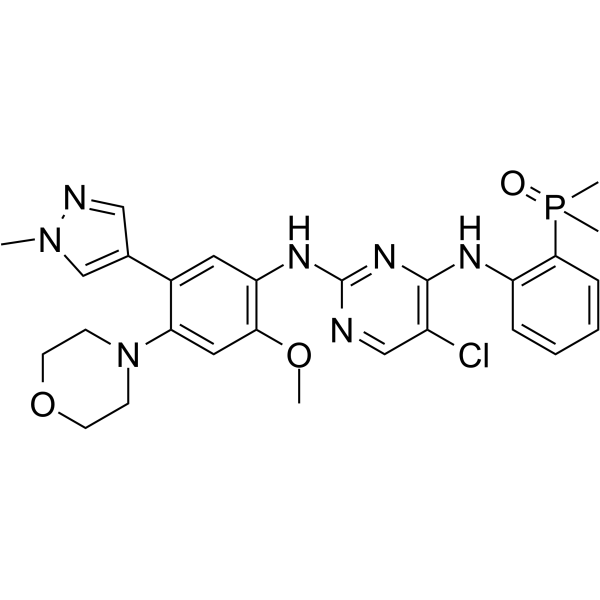
-
GC33195
EGFR-IN-2
EGFR-IN-2 is a a noncovalent, irreversible, mutant-selective second generation EGFR inhibitor.
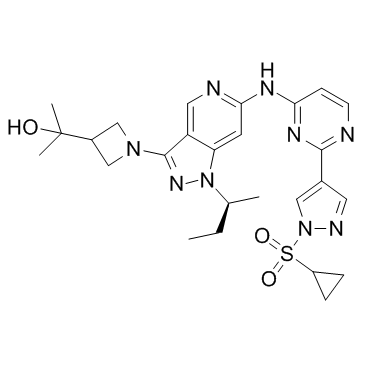
-
GC19132
EGFR-IN-3
EGFR-IN-3 is a third-generation EGFR TKI, with GI50 values of 5 nM (EGFR L858R/T790M), 10 nM (EGFR del19) and 689 nM (EGFR WT), respectively. EGFR-IN-3 has the potential for NSCLC research.
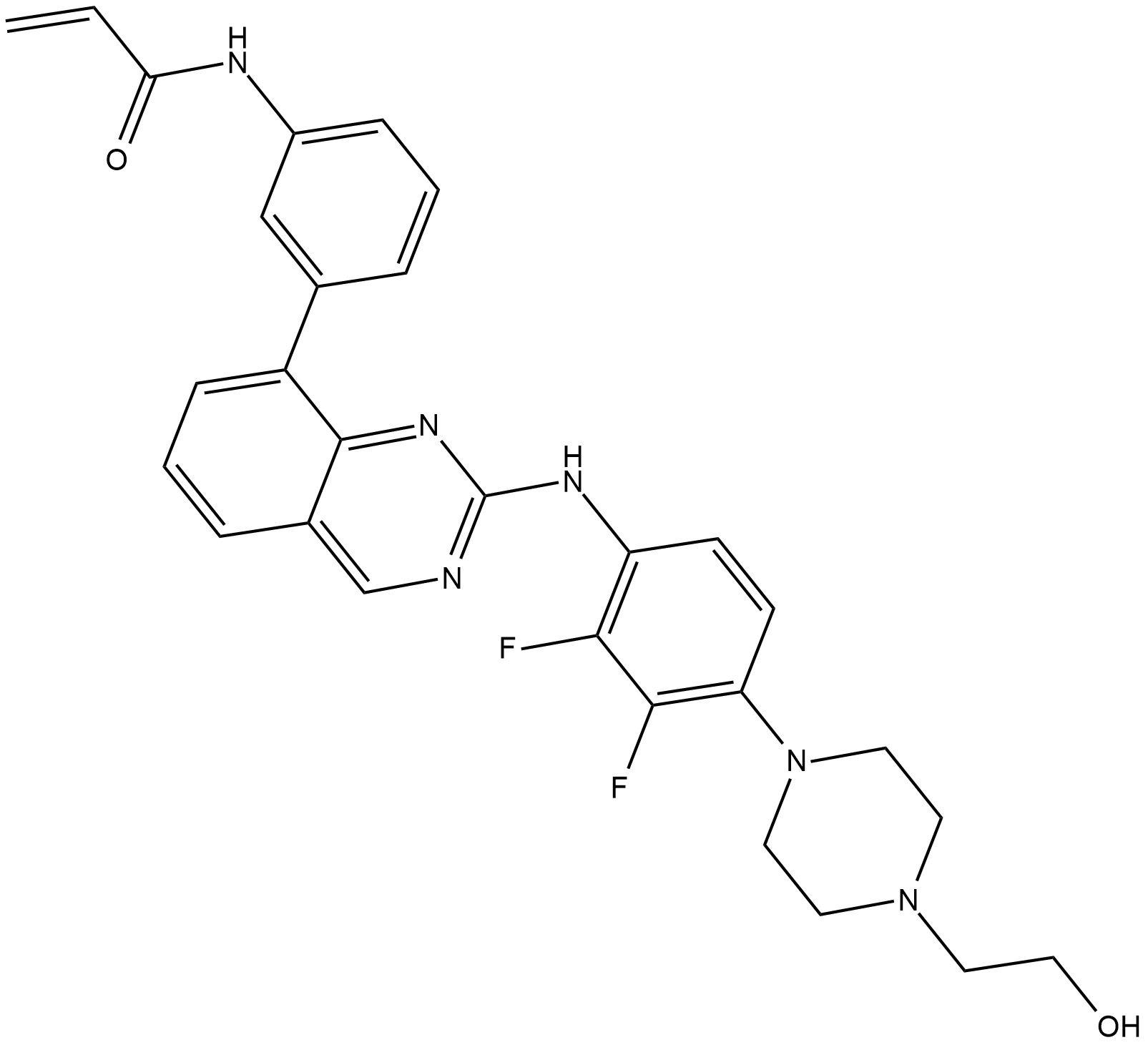
-
GC66428
EGFR-IN-5
EGFR-IN-5 is a EGFR inhibitor with IC50s of 10.4, 1.1, 34, 7.2 nM for EGFR, EGFRL858R, EGFRL858R/T790M, and EGFRL858R/T790M/C797S, respectively.
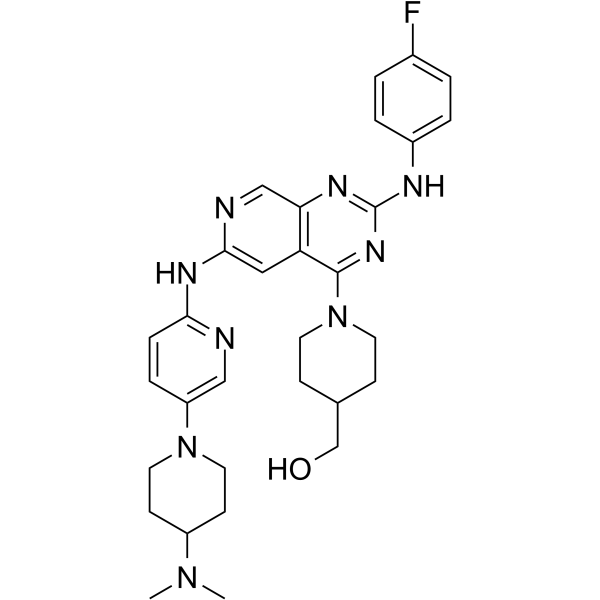
-
GC68440
EGFR-IN-69

-
GC35966
EGFR-IN-7
EGFR-IN-7 is a potent, selective and orally active EGFR kinase inhibitor. EGFR-IN-7 has inhibitory effect for for EGFR (WT) and EGFR (mutant C797S/T790M/L858R) with IC50 values of 7.92 nM and 0.218 nM, respectively. EGFR-IN-7 shows anti-tumor activity. EGFR-IN-7 can be used for the research of various cancers.
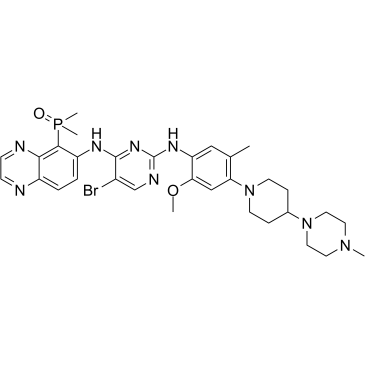
-
GC65974
EGFR-IN-9
EGFR-IN-9 (Compound 8) is a potent EGFR kinase inhibitor with IC50s of 7 nM, 28 nM for the wild type EGFR kinase and double mutant EGFR kinase (L858R/T790M). EGFR-IN-9 has antitumor activity.
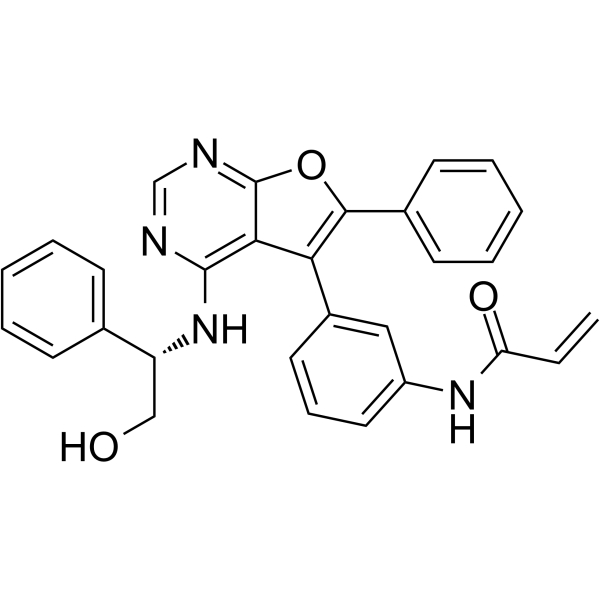
-
GC14856
EGFR/ErbB2 Inhibitor
EGFR/ErbB2 Inhibitor (Compound 5) is a EGFR and ErbB inhibitor with IC50s of 0.017 μM, 0.08 μM, 1.91 μM.
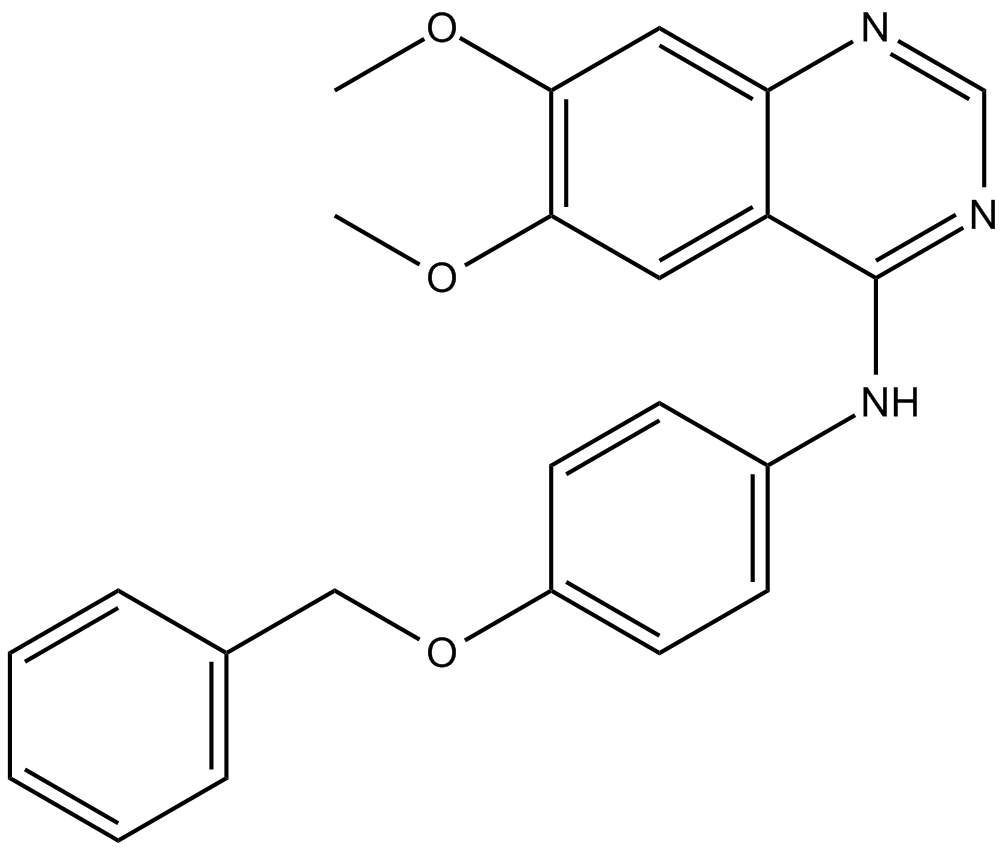
-
GC60805
EMI48
EMI48, the derivative of EMI1, displays greater potency toward mutant EGFR than EMI1. EMI48 inhibits EGFR triple mutants.
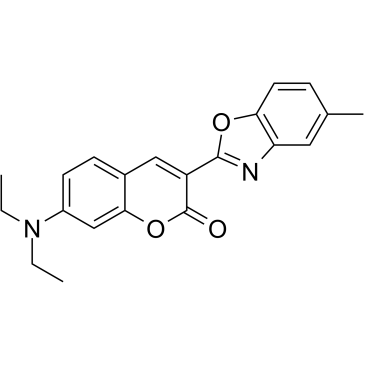
-
GC62420
EMI56
EMI56, the derivative of EMI1, displays greater potency toward mutant EGFR than EMI1. EMI56 inhibits EGFR triple mutants.
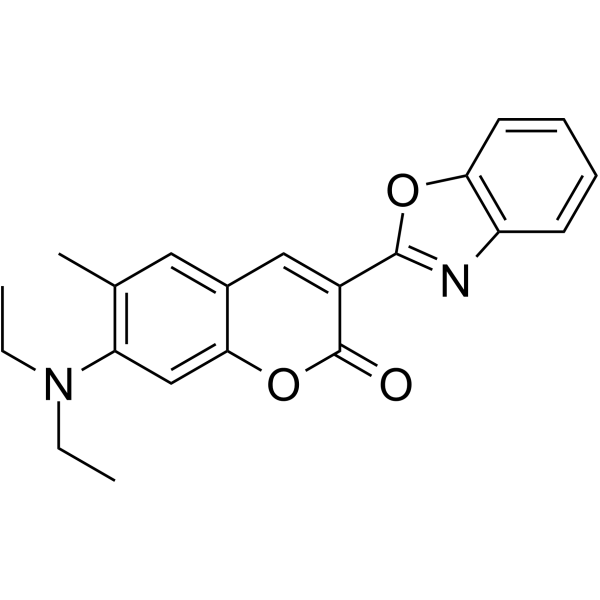
-
GC33048
Epertinib (S-22611)
Epertinib (S-22611) (S-22611) is a potent, oral, reversible, and selective tyrosine kinase inhibitor of EGFR, HER2 and HER4, with IC50s of 1.48 nM, 7.15 nM and 2.49 nM, respectively. Epertinib (S-22611) shows potent antitumor activity.
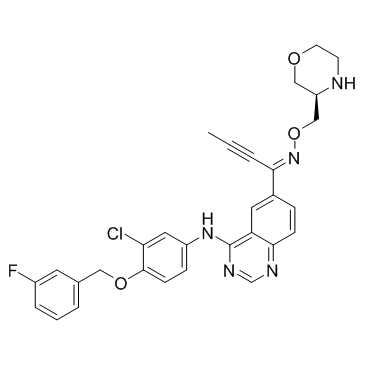
-
GC38350
Epertinib hydrochloride
Epertinib hydrochloride (S-22611 hydrochloride) is a potent, orally active, reversible, and selective tyrosine kinase inhibitor of EGFR, HER2 and HER4, with IC50s of 1.48 nM, 7.15 nM and 2.49 nM, respectively. Epertinib hydrochloride shows potent antitumor activity.
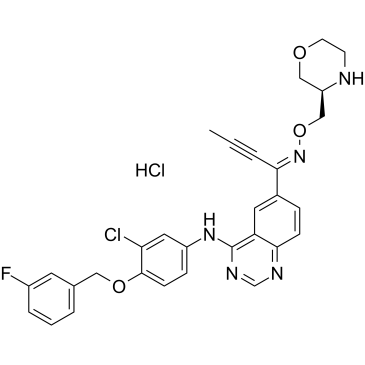
-
GC62384
Epitinib succinate
Epitinib succinate is an orally active and selective epidermal growth factor receptor tyrosine kinase inhibitor (EGFR-TKI) designed for optimal brain penetration. Epitinib succinate can be used for the research of cancer.
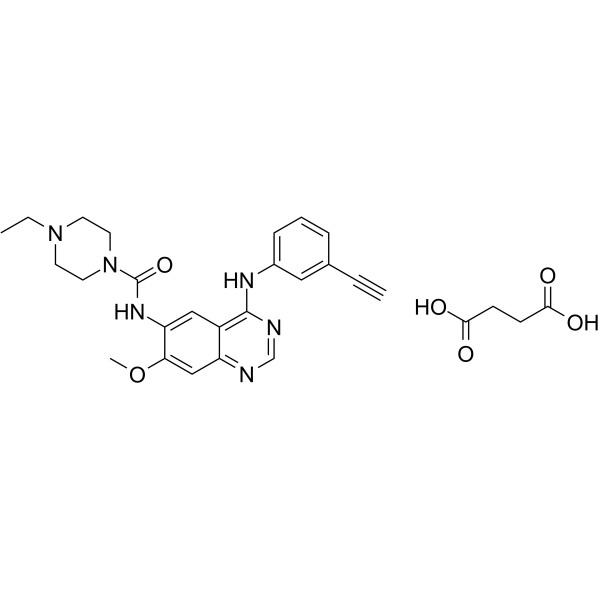
-
GC10627
Erlotinib
An EGFR tyrosine kinase inhibitor
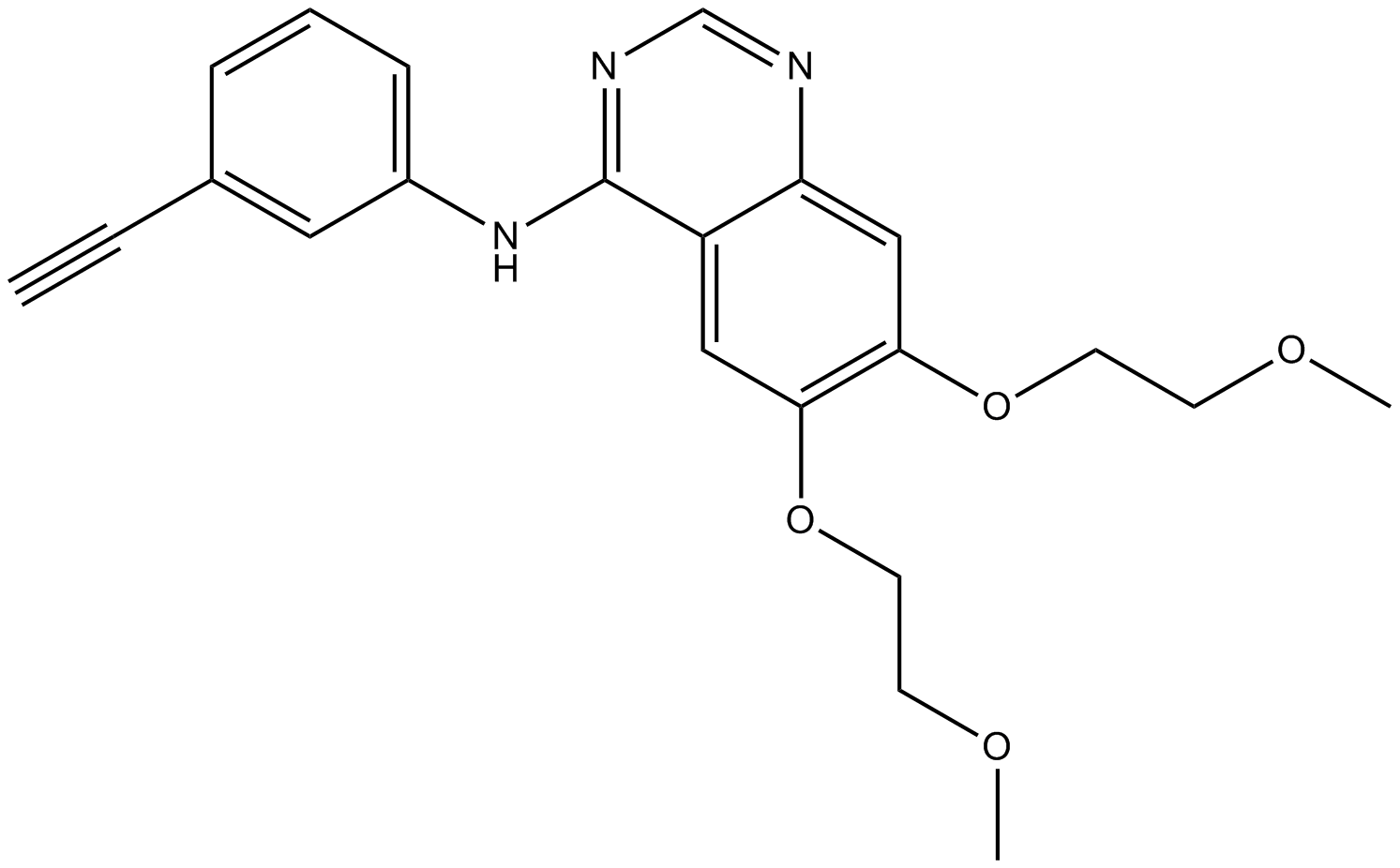
-
GC60154
Erlotinib D6
Erlotinib D6 (CP-358774 D6) is a deuterium labeled Erlotinib (CP-358774). Erlotinib is a directly acting inhibitor EGFR tyrosine kinase inhibitor with an IC50 of 2 nM for human EGFR.
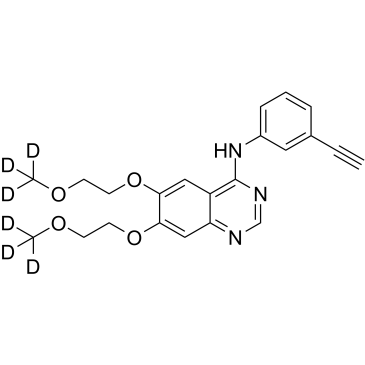
-
GC15600
Erlotinib Hydrochloride
An EGFR tyrosine kinase inhibitor
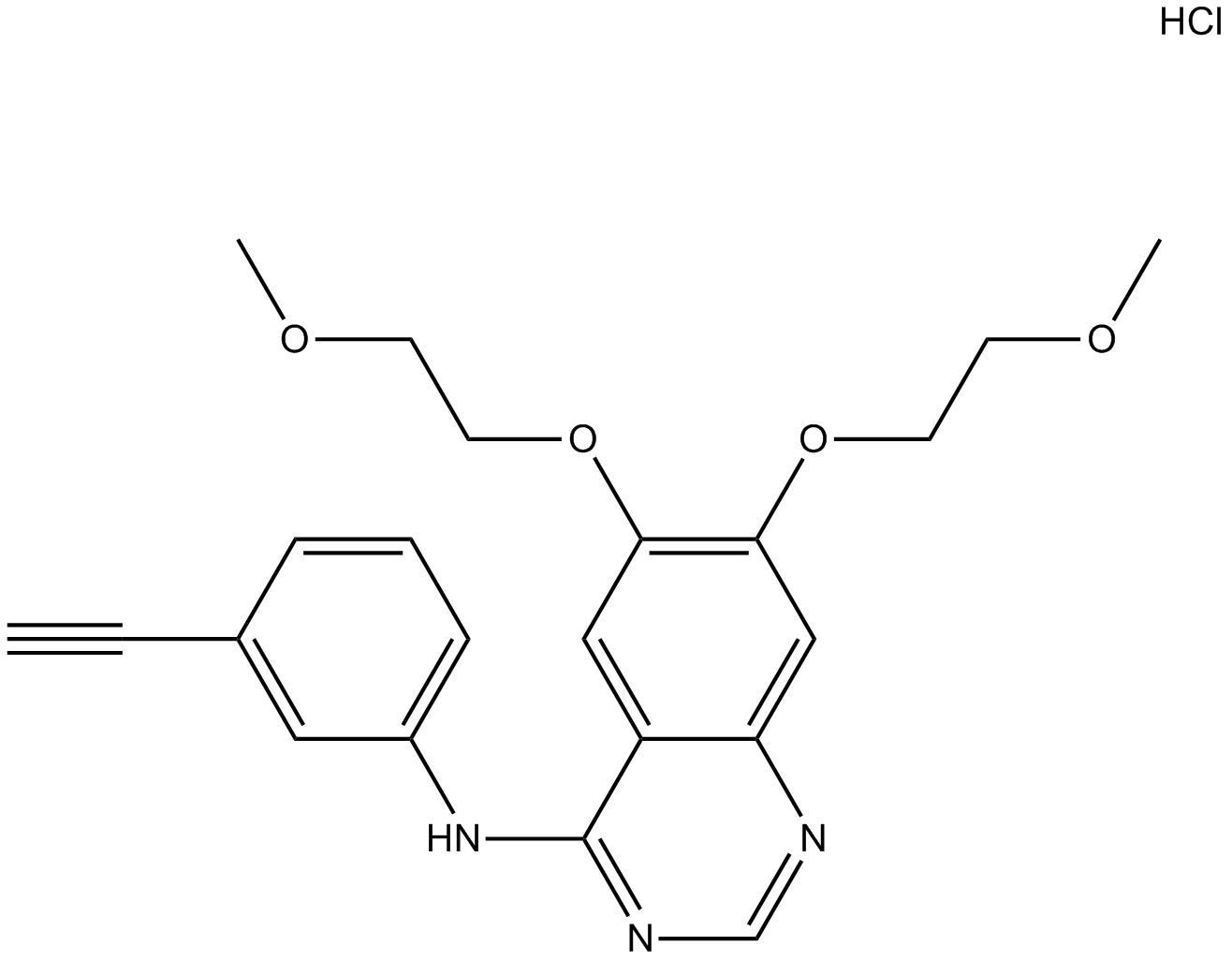
-
GC36003
Erlotinib mesylate
EGFR inhibitor
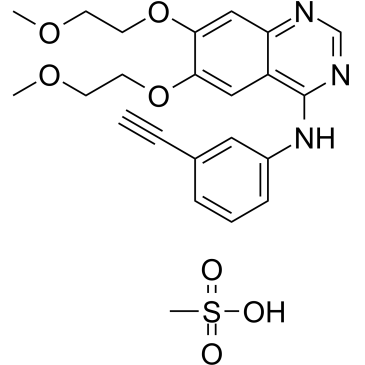
-
GC62958
Erlotinib-13C6
Erlotinib-13C6 (CP-358774-13C6) is a 13C-labeled Erlotinib. Erlotinib is a directly acting EGFR tyrosine kinase inhibitor, with an IC50 of 2 nM for human EGFR.
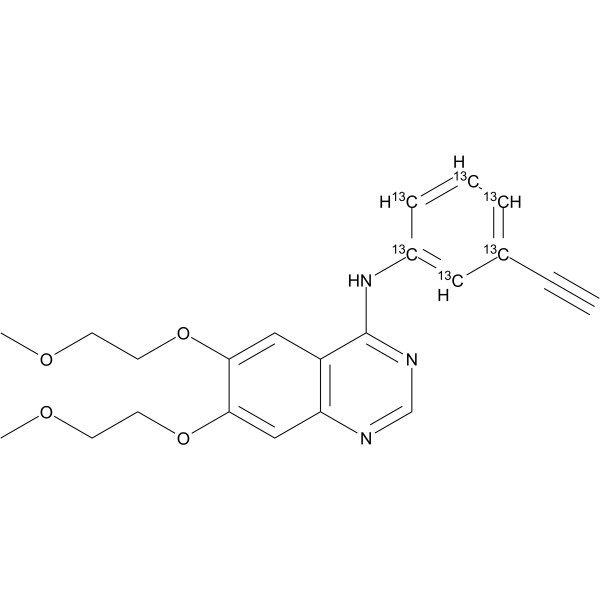
-
GC47303
Erlotinib-d6 (hydrochloride)
An internal standard for the quantification of erlotinib
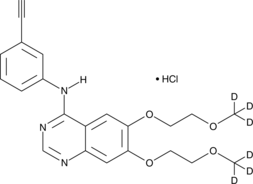
-
GC65992
FGFR2-IN-3
FGFR2-IN-3 is an orally active selective inhibitor of FGFR2.
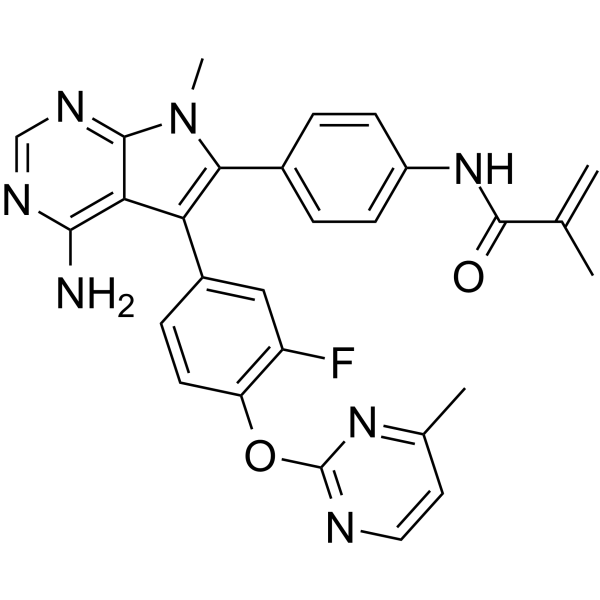
-
GC65991
FGFR2-IN-3 hydrochloride
FGFR2-IN-3 hydrochloride is an orally active selective inhibitor of FGFR2.
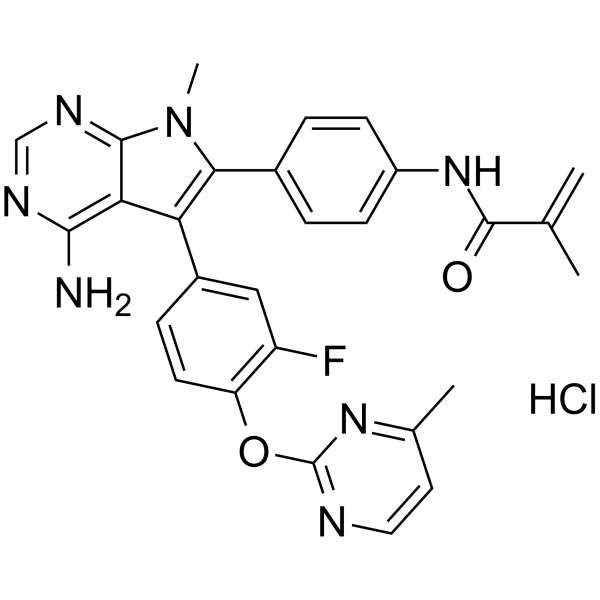
-
GC17323
FIIN-2
Irreversible inhibitor of FGFR
